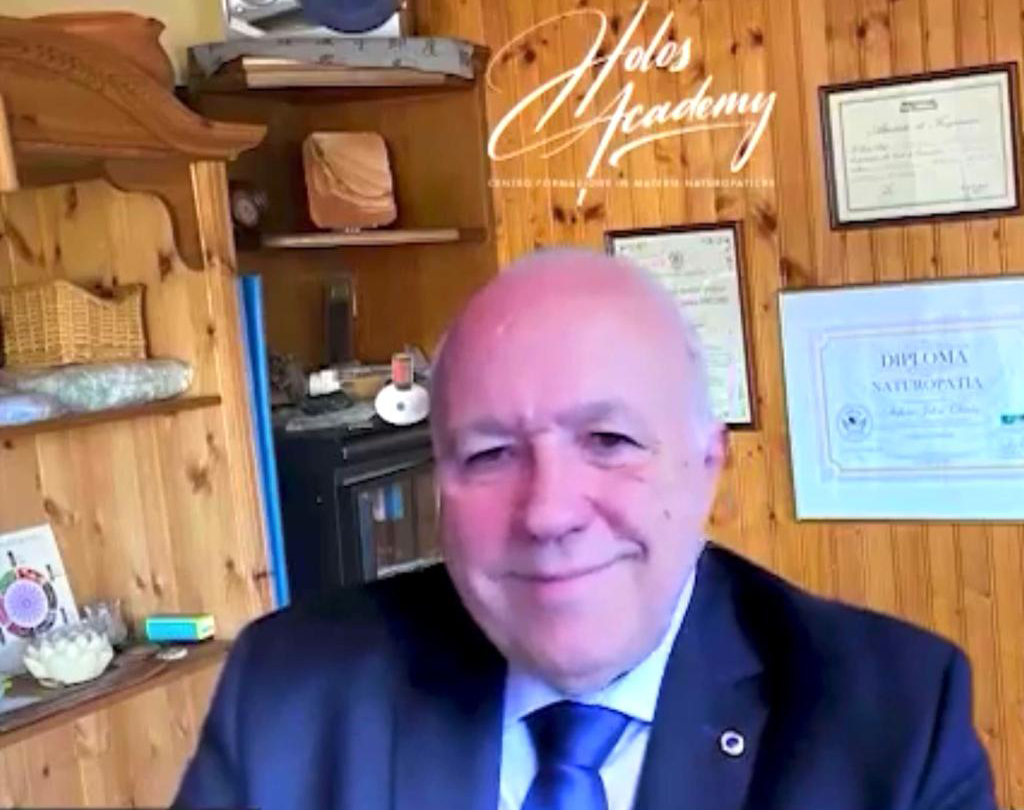
Title: Copaiba: its role and future in Clinical Aromatherapy
Plenary Speaker
Dr. Steve John Chiola
Holos Academy, Switzerland
Abstract
Copaiba is undoubtedly a rising star in the field. In this article, we will delve into the history, chemical composition, benefits, and future of Copaiba in clinical aromatherapy.
The chemical composition of Copaiba is what sets it apart from other essential oils. It contains high levels of beta-caryophyllene, a sesquiterpene that acts as a potent anti-inflammatory and analgesic agent. This compound has been extensively studied for its potential in relieving pain, reducing inflammation, and supporting the immune system.
As the field of clinical aromatherapy continues to evolve, Copaiba holds great promise for the future. Its unique chemical composition and versatile therapeutic properties and its interaction with the Endocannabinoid System make it a valuable asset in Integrative Medicine.
Within the presentation you will be exposed to various research data and personal experience witness the transformative effects it can have on your overall well-being and that will promote the use of Copaiba into your daily routine and embrace the rising star of Copaiba and unlock its potential in your clinical aromatherapy practice.
Biography
Born and raised in the United States, after studying Medicine at the University of Genoa, I specialized in he graduated from Medicine & Health Sciences Founder, Educational Director and Professor of Holos Academy – Educational & Training Center (Switzerland) and President of the Swiss Clinical Aromatherapy Association (Switzerland) Consultant in Clinical Aromatherapy and Emotional Aromatherapy for the Geriatric Center of the Luganese Hospital of Moncucco - Dr. Pio Eugenio Fontana and Geriatric Center at Felix Platter Hospital - Prof. Reto Kressig I worked as an assistant at Peking University during his specialization in Traditional Chinese Medicine and as an Associate Professor at the University of Siena where he taught Medical Informatics, Naturopathic Phlebolymhlogy and Vodder Technique.
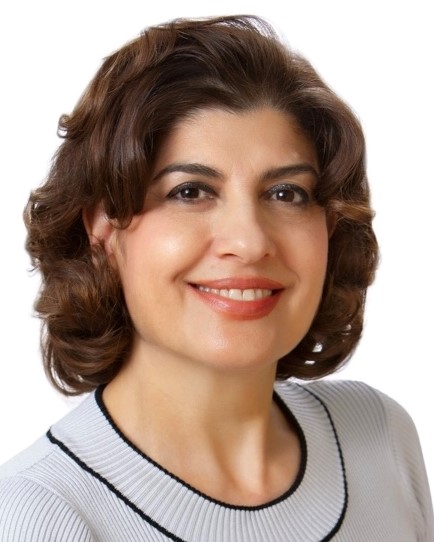
Title: Treating the person, not the disease. My cured cases are the proof. Part-2
Plenary Speaker
Dr. Parvin Zarrin
Bio Quantum Academy
Canada
Abstract
As a homeopath, nutritionist, and integrative medicine practitioner, I have concluded that my integral approach has confidently been the key to my successful practice in the past two decades. Integrative medicine is an umbrella which covers many natural modalities such as homeopathy, nutrition, gemmotherapy, phytotherapy, naturopathy, clinical aromatherapy, medicinal plants, apitherapy, endocanabinology and many more.
I would like to share my successfully cured cases in order to elaborate my integrative medicine approach and explain how we can activate the inner healing ability, removing chronic internal disharmony in order to bring forth the natural cure and restate health gently, efficiently, and permanently. These patients had frequently tried many different allopathic medications and other related treatments without any improvement prior to coming to me. I started treating them with my integral approach patiently and positively until they were fully recovered.
1-Large thyroid tumor-Female 62 years old-Tumor was numbed in less than a year, and it was completely deteriorated in 14 months year. No sign of tumor and no return.
By Homeopathic medicine, Homeopathic Tissue Salts, Gemmotherapy, Oligo-therapy, Homeopathic Organotherapy, Nosodes
2-Infertility for years-Female 40 years old-Pregnancy within 4.5 months. Gestation diabetes in the last month of pregnancy. Diabetes resolved without Insulin or medications. Full term pregnancy and gave birth to health boy.
By homeopathic medicine, Pathways endocrine homo-toxicology medicine, Homeopathic Tissue Salts, Gemmotherapy, Olio-elements, Homeopathic Organotherapy, Female Supporting Nutritional medicine
3-Major stroke with left side paralysis, seizer with vomiting and stuttering- Male 66 years old-Astonishing recovery in 9 months. Walking without a cane. Talking clearly. No episodes of seizer permanently.
By homeopathic medicine, Homo-toxicology, Tissue Salts, Gemmotherapy
4-Advanced Chron’s Disease-Male 75 years old. Progressive improvement in the first 3 months and a complete recovery in less than 6 months. Chron’s disease never returned.
By homeopathic medicine, Homo-toxicology, Tissue salts, Gemmotherapy, Nutritional diet plans.
Biography
Parvin Zarrin is a world- known Integrative Practitioner specializing in Homeopathic Medicine. She received a Doctorate of Philosophy in Integrative Medicine, Diploma in Homeopathic Medicine & Sciences, Certificates of Achievement in Homeopathy from Germany, a degree in Nutritional Sciences, obtained several certificates in Homo-toxicology Medicine. She is awarded an order of Excellence in her homeopathic research for her PhD in Canada. She is an educator at Bio Quantum Academy, an International lecturer and the author of Quantum Anti-Aging book. She is the founder of Integrative Medicine & Nutrition, and the director of Bio Quantum Academy in Canada. She has been practicing Homeopathic Medicine (Homo-toxicology-a branch of homeopathic medicine) for over 20 years with a great success. She has successfully treated hundreds of people with serious chronic illnesses around the world. www.bioquantum.ca

Title: Biomimicry model-2024
Plenary Speaker
Dr. Ferenc Karacsony
Cannabinoid Medicine Foundation
Hungary
Abstract
Integrative medicine was born out of the scientific summarising intent of our time. It began as a serious endeavour to get closer to ourselves, better understand how our bodies work, and learn to see the whole while getting deeper into the details.
As so often, following nature's example is a great help.
To do this, we must first recognise the essence, and from there, we can build the abstract model.
The most important properties of the living human organism are only specific to our organism as a whole. These include the maintenance of homeostasis, the regenerative manifestations of restoring disturbed homeostasis, and the amplification of extra-sensory capacities that can occur when homeostasis is maintained at a high level.
Abstraction is about understanding and describing homeostasis at all levels. To do this, we need a picture of the homeostasis of the human being in the mind-spirit-body triad. We can develop a specific image from any angle, from any point of view. Still, it is essential that our approach can be strung together without residue within a system.
This system must be built on the quantum-physical description of the homeostasis of the living organism because this is the common denominator in biophysics, biochemistry, and molecular biology.
Quantum vacuum theory has often surpassed applied biophysics, biology, and biochemistry. Our task is to integrate the partial knowledge into the big picture represented by quantum vacuum theory.
In my talk, I will present the history of specialisation today and the limitations of discipline. I will propose a systematisation that reflects our view of reality in a biomimicry way, according to the actual state of science, rather than today's outdated practices.
Biography
Dr. Ferenc Karacsony pediatrician. He has an university licenses: homeopathy, neural therapy, traditional Chinese Medicine, detoxification methods, orientalist diagnostics, blood oxygenation. Honorary Candidate of Honor Causal in Neural therapy and Detoxification Methods. President of the Cannabinoid Medical Foundation. His books, "The Book of Detoxification," and "The World of Cannabinoid Medicine."
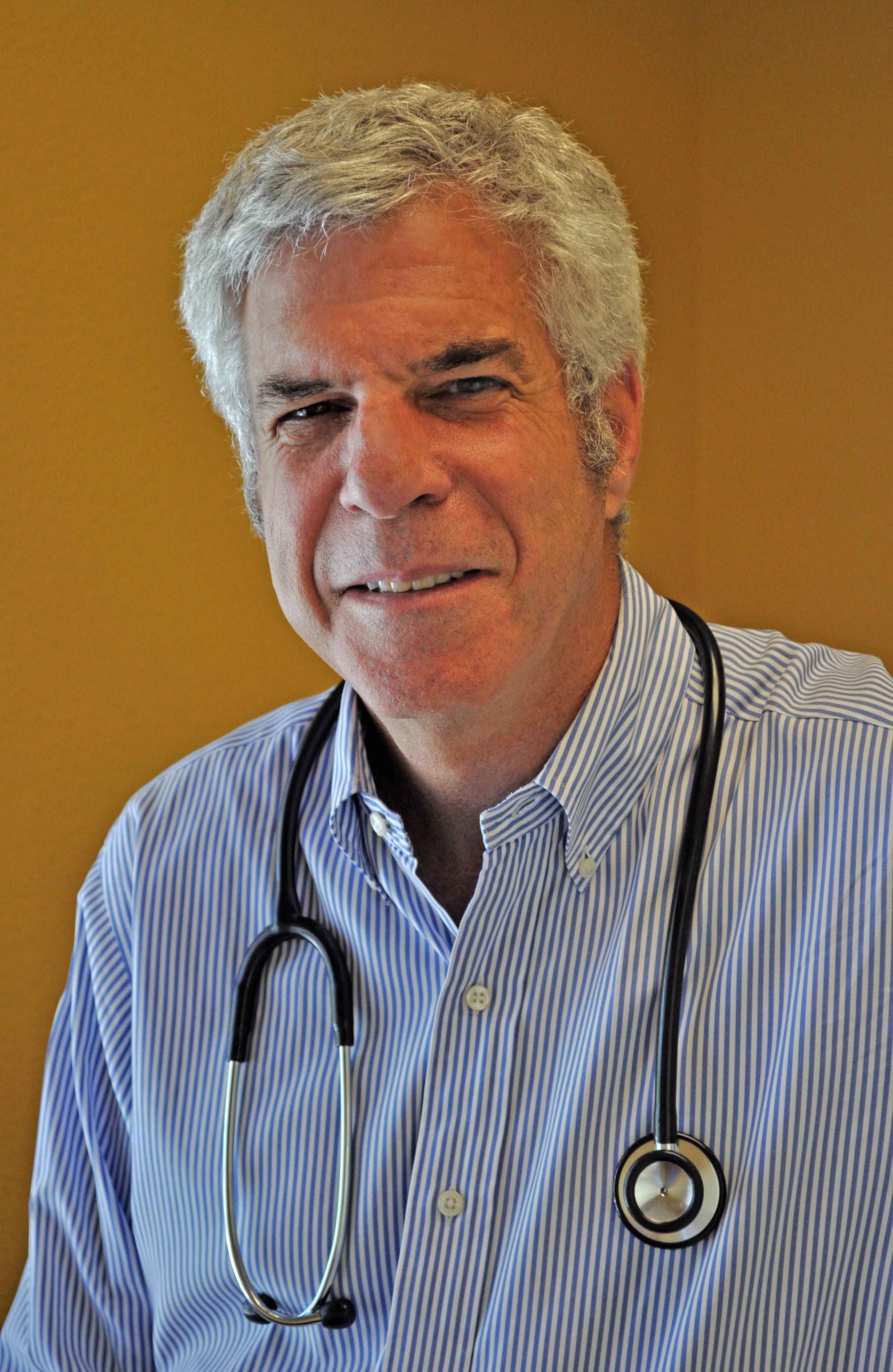
Title: Everything We Learned About Hormone Optimization in Medical School was Wrong
Plenary Speaker
Dr. William Clearfield
Clearfield Medical Clinic
USA
Abstract
Hormones, chemicals produced in the body that carry messages from their organ of origin to specific cells, are designed to keep the body’s natural balance in check and carry out the instructions received.
Hormones are the “juice” of life. Strength, energy, glucose utilization and metabolism, weight control, inflammation, skin tone, sexual energy, sexual desire, and even cellulite accumulation (or lack thereof) are influenced by our hormones.
It is no secret that major disruptions occur to both body and mind as we age. The maturation process is often associated with deteriorating quality of life.
Fatigue, headaches, energy, loss of motivation, gas, bloating, diarrhea, constipation, or a combination of the two, poor sleep, weight gain, decreased sex drive, depressed mood, anxiety or irritability, loss of memory and concentration are symptoms of a body in decline.
Like the fluids in your car, hormones are the “juice of life.” Beginning around age 35, a natural 1-2% a year decline in sex hormone production occurs. Combining Mother Nature with iatrogenic interference with cholesterol production, vis a vis diet and medication (statins), results in a harsher decline in physical and mental well-being than need be.
This lecture is an evidence-based updated version of our basic introduction to hormone optimization.
Biography
William Clearfield, a 1978 graduate of the College of Osteopathic Medicine and Surgery, Des Moines, IA., completed a rotating internship and served as an OB/GYN resident at Metropolitan Hospital, Philadelphia, PA. Certified by the American Board of Family Medicine after completing a Family Practice resident in 1982 at United Health and Hospital Services in Kingston, PA, Dr. Clearfield, since 1982, is a leading figure in family and integrative medicine. With graduate expertise in areas ranging from Cardiac Rehabilitation (the University of Wisconsin/Lacrosse) to Medical Acupuncture (UCLA, 1991), to Age Management and Non-Surgical Aesthetic Medicine, (fellowship-trained and diplomat status from the American Academy of Anti-Aging Medicine,) Dr. C is a leading authority on cutting-edge medicine in Northern Nevada. In 2016, Dr. Clearfield’s turned when, after meeting with several veterans who suffered traumatic head injuries while serving overseas, recognized some of the long term maladies experienced by these soldiers were hormonal consequences of their TBI’s. Research led him to study with and be certified by the Millennium-Warrior Angel Foundation Traumatic Brain Injury Program. Dr. C’s lectures on Traumatic Brain Injury and Hormone Replacement in general, have taken him to OMED, the American Osteopathic Association’s Scientific Convention, NOMA, the Nevada Osteopathic Association, the American Osteopathic Society of Rheumatologic Disease, and the American Academy of Anti-Aging Medicine. Dr. Clearfield is the Nevada Delegate to the American Osteopathic Association’s House of Delegates and the Executive Director of the American Osteopathic Society of Rheumatologic Diseases.

Title: Exceptional Health through Uncommon Knowledge
Speaker
Linda-Marie Kot
Holistic Healing & Wellness Author & Coach
USA
Abstract
My purpose and passion is to bring the Gift of Healing to others.
For 35 years, I have diligently researched and successfully practiced uncommonly known, all-natural healing methods. I have been blessed to have published 2 books on this critically needed subject. The first book, “Wellness Warrior Masterclass Secrets,” presents at least 9 uncommonly known methods of disease reversal and prevention. Revealed are Alternative Medicine and Holistic Cures that have been successfully used for over 3,000 years, many of which are from the ancient records of Ayurvedic Medicine and the Emperor’s Yellow Book. Their long History and the multitude of Scientific evidence confirm that the successful results of these Natural Healing Methods are unparalleled. Readers/students are also riveted by a multitude of stunning Testimonials that give current concrete credibility to them all.
Each Power Practice I teach becomes a Golden Brick of Wellness in your hand. Use one, or use all, to build a bridge to Lifelong Exceptional Health.
Through my classes and publications, health-seeking people will learn how we:
● Reversed my Mother’s Alzheimer’s & my Father’s Diabetes
● Removed Friend from heart transplant list
● Balanced ADHD brain waves in 20 seconds
● Healed incurable disease & get patient out of his wheelchair
● Healed gums & saved teeth
● Increased Brain Circulation by 39%
Additional life-changing knowledge includes discovering:
● What is the ONE thing you eat every day that makes you fatter and sicker
● How your teeth are killing you.
● How you are starving your brain cells…right now.
● Why Good Fat is your Best Friend.
● What are the ”avoid foods” that are clotting your blood
● Which Healthy Saturated Fat triggers weight loss
● What is Nature's Most Powerful Anti-Viral
Learning the startling answers to these core questions can powerfully reinstate you as the “Master of your Health.”
It is my pleasure and my Gift to enlighten others to unique Healing and Prevention methods that are amazingly potent yet incredibly simple. With God’s help, I have forged for others an exciting path that is both motivational and transformational. Choosing this Path ensures that you are exponentially more likely to ESCAPE the PRESCRIPTION DRUG LOOP & celebrate a positive, if not radical change in your Health and in your Life…
Biography
United States born, Linda-Marie Kot / Noelle Powers (nom de plume) is a 35 year veteran of Holistic Healing & Wellness, fulfilling the role of practitioner, teacher, coach and author of two books: “Wellness Warrior Masterclass Secrets” & “Atomic Health Master Cleanse”.
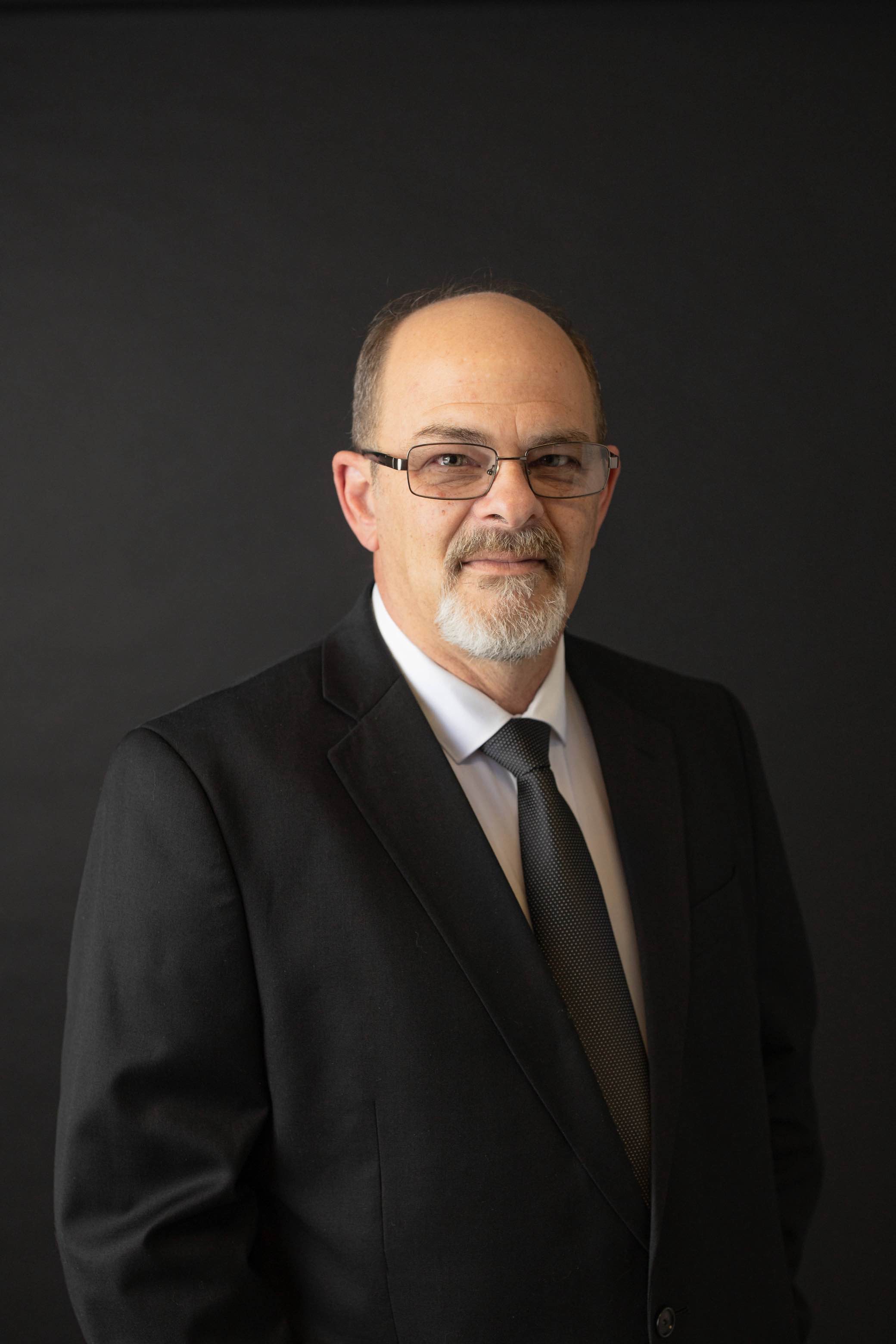
Title: The Need for an Integrative Medical Approach in the Treatment of PTSD and Related Mental Disorders
Keynote Speaker
Dr. Michael Lane
Naturopathy Lane
USA
Abstract
This research is a meta analysis of PTSD and why we need an integrative approach to treatment versus what we do clinically today. 22 veterans alone take their own lives because of untreated or mistreated PTSD. This meta analysis will demonstrate the need for further research on the topic of the integrated approach to treatment. The meta analysis suggested a common thread to all of PTSD’s comorbidities. This information leads us to a path forward that no longer includes just one type of treatment, but a full spectrum of modalities. The implications could be as minor as saving one life, but a reduction in the 22 veteran suicides per day is the goal.
Biography
I am Michael A. Lane “Mike”, 56 year old Desert Storm Veteran who defied the demographic odds by being diagnosed with PTSD after finishing my Undergraduate education and attaining my seat in my graduate program. I am currently awaiting my Traditional Naturopathic Doctorate from New Eden School of Natural Health and Herbal Studies; where I attained my Master Herbalist designation in 2020. My areas of interest are mental disorders and herbal remedies for those diseases. My Dissertation was on the topic of an integrated approach to treating PTSD and the comorbidities that are usually associated with that diagnosis.
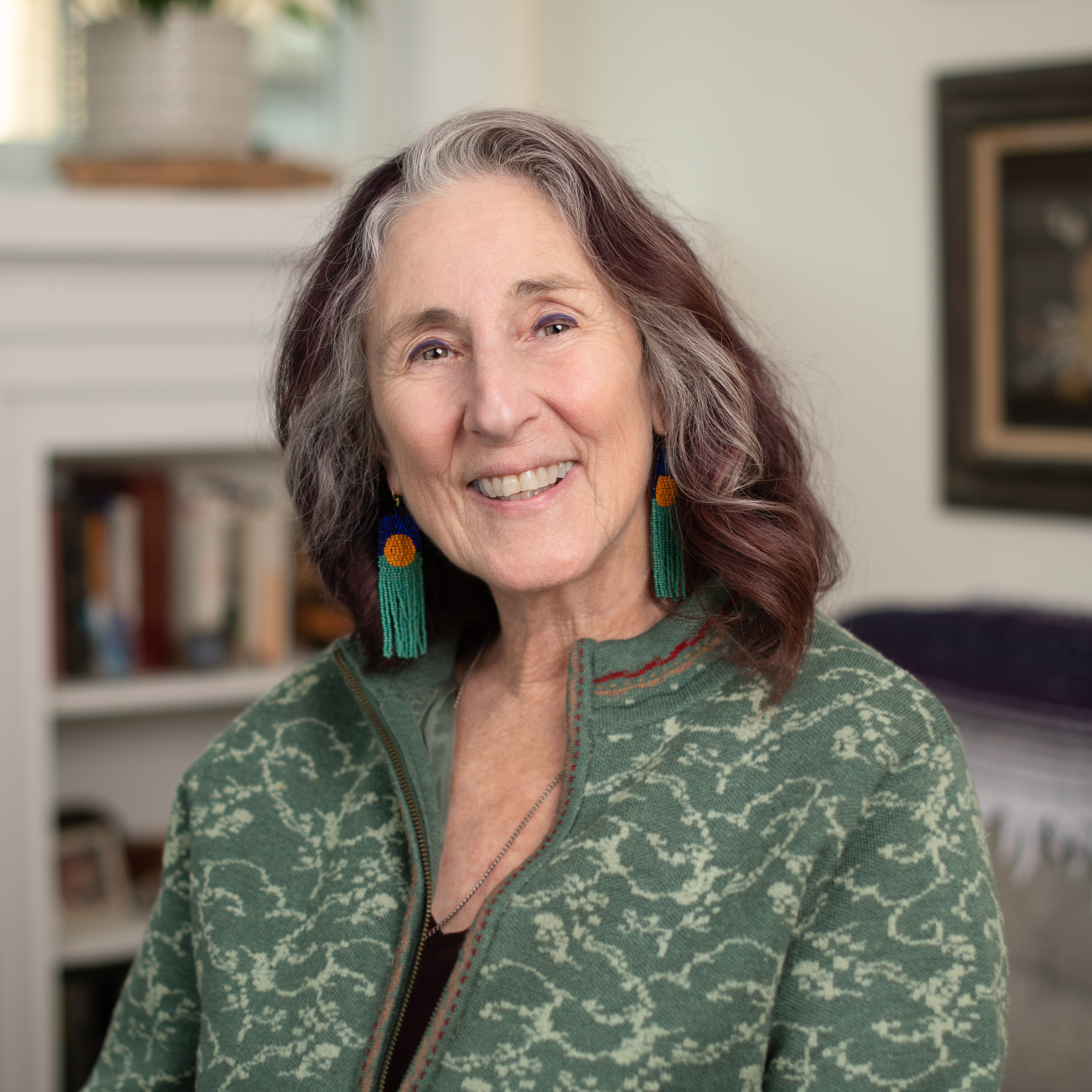
Title: Intentional Touch – the Other Medicine: An Anecdotal Study of 35 Years as a Bodyworker
Keynote Speaker
Jacki Gethner
Regenerative Therapies
USA
Abstract
Whereas medical science is certainly the driving force behind health experiences, openness, touch, energy, and other tools are powerful adjuncts that are coming more into focus and use on the journey to wellness. Different modalities of body work can and do support prevention and treatment of medical/psychological diagnoses. These support the patient’s preferences as they attempt to support mental, physical, and spiritual aspects of health. There is some crossover happening between the practice of conventional medicine and holistic medicine with evidence-based research. These areas of complementary healing are generally identified in one of four ways: mind/body therapy, biologically-based practices, manipulative and body-based practices, and energy healing. This presentation will share four areas in which I have spent the last thirty-five years sharing and experiencing the benefit with clients, including the last moments of one’s life. The strength of these practices also support that of family and loved ones, allowing them to participate, if desired, in comfort care. My decades of experience with clients has demonstrated, time and again, the importance of incorporating these body work methods into one’s overall picture of care.
Biography
Jacki Gethner (LMT, Retired Certified Alcohol & Drug counselor) is a renowned international health advocate, activist and educator. She possesses over three decades of experience in massage and bodywork. She has won several national and local awards, including as sole recipient of a national Kaiser Permanente award for diversity in her work. Jacki is known for her engaging and funny approach to teaching usable skills in the areas of health, wellness, and aging. Participants often remark that her workshops are among the most useful and fun they have attended, and everyone leaves with tools they can immediately put to use.

Title: Antibacterial Activity of Honey/Chitosan Nanofibers Loaded with Capsaicin and Gold Nanoparticles for Wound Dressing
Speaker
Prof. Mona S. Alwahaibi
Department of Botany and Microbiology, College of Science, King Saud University
Saudi Arabia
Abstract
This paper describes the preparation, characterization, and evaluation of honey/ tripolyphosphate (TPP)/chitosan (HTCs) nanofibers loaded with capsaicin derived from the natural extract of hot pepper (Capsicum annuum L.) and loaded with gold nanoparticles (AuNPs) as biocompatible antimicrobial nanofibrous wound bandages in topical skin treatments. The capsaicin and AuNPs were packed within HTCs in HTCs-capsaicin, HTCs-AuNP, and HTCs-AuNPs/capsaicin nanofibrous mats. In vitro antibacterial testing against Pasteurella multocida, Klebsiella rhinoscleromatis, Staphylococcus pyogenes, and Vibrio vulnificus was conducted in comparison with difloxacin and chloramphenicol antibiotics. Cell viability and proliferation of the developed nanofibers were evaluated using an MTT assay. Finally, in vivo study of the wound-closure process was performed on New Zealand white rabbits. The results indicate that HTCs-capsaicin and HTCs-AuNPs are suitable in inhibiting bacterial growth compared with HTCs and HTCs-capsaicin/AuNP nanofibers and antibiotics(P<0.01). The MTT assay demonstrates that the nanofibrous mats increased cell proliferation compared with the untreated control (P<0.01). In vivo results show that the developed mats enhanced the wound-closure rate more effectively than the control samples. The novel nanofibrous wound dressings provide a relatively rapid and efficacious wound-healing ability, making the obtained nanofibers promising candidates for the development of improved bandage materials.
Biography
Mona Soliman Al-Wahaibi, Professor of Molecular Plant Taxonomy at King Saud University, Riyadh, Saudi Arabia, I was assigned as Vice Chair of the Department of Botany and Microbiology and then appointed as Assistant to the Vice Dean of the College of Science for Academic Affairs. I attended many national and international conferences, seminars, and workshops around the world. I have published more than 100 papers in international peer-reviewed journals, in addition to being a potential reviewer for reputable international journals related to botany and biotechnology under well-known publishing houses. Elsevier, Taylor & Francis, Wiley, Springer, etc. My interests lie in the molecular characterization of plant species and nanotechnology applications. I am also a member of several committees inside and outside the department. Member of the Committee for Reviewing the Description of Science Programs for some university faculties.
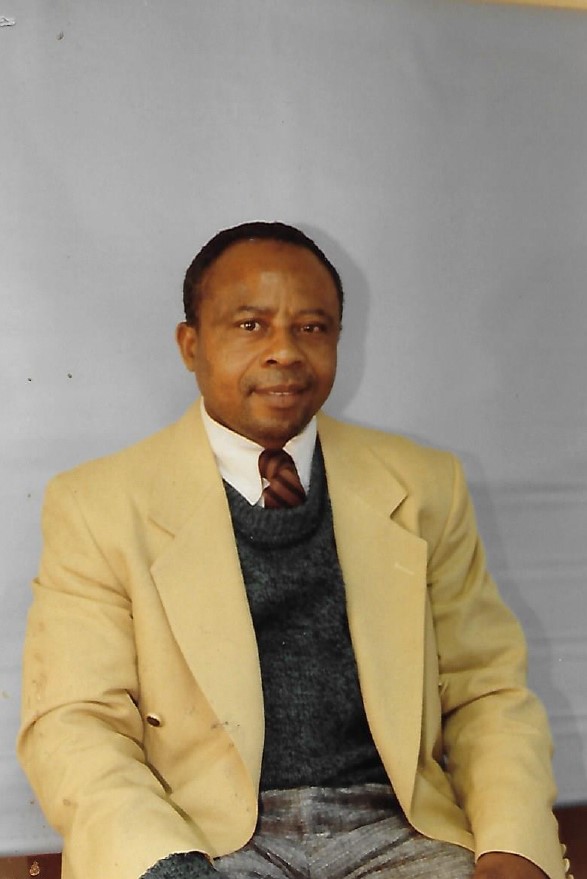
Title: Pain Patients’ Perceptions Of Selected Conventional, Alternative, And Integrative Medical Treatments In Pain Management: A Qualitative Study
Speaker
Dr. Owen Ngozi Owunwanne
Akamai University
USA
Abstract
The present study is technically mixed but primarily qualitative. Content analysis was used to quantify the summary of the data in terms of counts and percentages of how many participants contributed to qualitative themes and the health survey is quantitative. The study was designed to provide a comprehensive analysis of facts that influence participant’s decisions and perceptions about the use of conventional, alternative, and integrative medicine for chronic pain. Users of three types of medical treatments are generally characterized as being above, normal, or below normal health compared by 1998 normal health standard by participants. The study’s participants were 17 people who experienced or were diagnosed with chronic pain using patients’ perception survey (SF-36). The questionnaire asked about their experience of chronic pain, treatment, and health outcomes and the way they perceived conventional, alternative, and integrative treatment.
Physicians were interviewed. From the physicians’ perspective, interviews suggested that integrative medicine is more open to the use of other medical treatments and modalities for chronic pain. Although interviewees who practiced conventional and alternative medicine were somewhat open to other medical treatments and modalities, they were more restricted in their willingness to utilize treatment modalities different from their practice of medicine compared to integrative medicine. Participants were more aware
A Qualitative Study
of why they chose alternative medicine but were less aware of why they chose integrative medicine even though they were satisfied with it.
The primary focus of this study was patient satisfaction and perceptions of conventional, alternative, and integrative medicine in the treatment of chronic pain: 8 showed satisfaction with alternative treatment only; 7 were satisfied with integrative treatment for chronic pain or some combination of modalities; 13 participants chose alternative methods because they perceived it as good for body or mentioned personal preferences and practicality. For most, complementary and alternative medicine (CAM)seemed beneficial, holistic, and more natural healing. Some patients appeared unclear of the difference between integrative and alternative medicine. The study showed that patients preferred alternative, complementary, and integrative medicine to conventional medicine. Evidence suggests that patients’ choice of treatment are linked to the strong value they attach to their culture, religious beliefs, and confidence in their doctor.
Additional research is recommended.
Biography
Dr Owunwanne earned his Ph.D. in Applied Psychology with a concentration in Psychophysiology and Health Psychology at the Akamai University in 2011; M.A. degree in Psychology with a concentration in Health Psychology at the Saybrook University California in 2005; MBA degree in Health Administration at the University of Beverly Hills California in 1982; B.S. in Business Administration with a concentration in Personnel Management at the State University of New York Buffalo New York in 1978, and a Diploma in Education for the Ministry (EFM) at St. John's Lafayette square Church in Washington District of Columbia in 1997. Dr. Owunwanne is a school teacher at Montgomery County Public Schools in Maryland. He worked for Delta T Group, a Health Care Service Agency, Maxim Health Care Services as a Therapeutic Behavioral Aide, a school registrar for Washington District of Columbia Public Schools. He served on the grading and reporting development committee for Middle School students. He served on the school curriculum for student youth services in the Washington District of Columbia. He served as Co-Director and a Policy Advisor, UNICEF-United Nations Association, Global Classroom in District of Columbia area for over 1,900 teachers and students. Since 2013 Dr. Owunwanne has been lecturing at Howard University College of Pharmacy, teaching CAM therapies as applicable to chronic diseases such as kidney problems, urinary tract problems, prostate problems, musculoskeletal disorders, arthritis disorders, metabolic disorders. Dr. Owunwanne is the author of the Pain Patients' Perceptions of Selected Conventional, Alternative, and Integrative Medical Treatments in Pain Management. He studied HeartMath Intervention Program at HeartMath Institute in California in 2013, where he earned a professional HearthMath license to practice the HearthMath Intervention Behavioral Health program as a provider. He received training as a Certified Medical Revenue Manager(CMRM) at the Medical Revenue Management Association of America(MRMAA) and holds Medical Revenue Management license with American Business Systems(ABS) in 2020. Dr. Owunwanne is the owner of ONJO Medical Solutions. He specialized in Medical Practice Management, Revenue Cycle Optimization, and Private Practice Business Support. 5 | P a g e Furthermore, he specialized in making Medical Practice more streamlined and profitable. Dr. Owunwanne has demonstrated effective and efficient cash flow for thousands of practices using his company's processes and systems. He performs Complimentary Practice Analysis to show practices in more detail the impact of their training. He helps Medical Practitioners increase their revenue, provides innovative solutions to get physicians paid more and faster. He helps Medical Practitioners spend more time with patient care than paperwork. He helps Medical practitioners with Billing and Coding, assisting them with Errors and Omissions, explaining benefits (EOB), etc. Dr. Owunwanne accomplishes these processes by conducting regular Zoom meetings, conferences, and in-person consultations with healthcare providers. He offers these services world wild to Health Care Providers who can be connected to ONJO Medical Solutions and receive assistance. Dr. Owunwanne is the owner of the Owen Community Healthcare Center, Inc, 501(C)(3) nonprofit organization providing Mental Health Services in Silver Spring, Maryland as a Life Coach to individuals suffering from anxiety, stress, anger, pain, fear, and emotional depression. Dr. Owunwanne owns ONJO Financial Services Corp, a Small Minority Business Staffing Company in Silver Spring, Maryland. For over 20 years with experience in the staffing industry, he has been committed to fulfilling agencies' requirements efficiently and effectively. Whether companies need permanent staffing, customized recruitment campaigns, project services, or contract staff augmentation, he provides and delivers experienced, proven professionals to such companies.
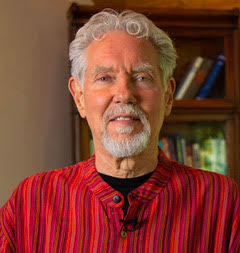
Title: The Transition from the Disease Oriented Medical Intervention System to Whole Person Health System
Plenary Speaker
Dr. Roger Jahnke
Director, Institute of Integral Qigong & Tai Chi and Health Action
USA
Abstract
It seems so logical that every nation would have a real health care system, focused on supporting citizens in maximizing health, vitality, resiliency and even inner peace. And yet, this is not so. The USA is the prime example of a nation that has habituated its citizens to a medical paradigm that is almost completely disease intervention oriented – with very little health maximizing focus. Starting in the 1990s there was an emergent literature for the potential benefits of reducing medical costs by accelerating healthy behavior to reduce the burden of chronic disease. However, the disease intervention model has prevailed.
The literature has been pointing to between 70 and 85% of all disease and disease treatment being preventable.
Health spending totaled $74.1 billion in 1970. By 2000, health expenditures had reached about $1.4 trillion, and in 2022 the amount spent on health tripled to $4.5 trillion. In the first year of the COVID-19 pandemic, health spending accelerated by 10.6% from 2019 to 2020. Health spending increased by 4.1% from 2021 to 2022, somewhat faster than the 3.2% increase from 2020 to 2021. The growth in total health spending from 2021 to 2022 is similar to the average annual growth rate of the 2010s (4.8%).
Biography
Dr. Roger Jahnke, OMD, is a doctor of traditional Chinese medicine and was the Chief of staff at the Health Action Integrative Medicine Clinic, in Santa Barbara California, from 1982 to 2012. He is currently CEO of Health Action Consulting with a focus on wellness and health resiliency programming in major hospital systems and social service institutions. Dr Jahnke is also the director of the Institute of Integral Qigong and Tai Chi (IIQTC), a research and training institute that has trained 2000 teachers and practice leaders and contributed to research in numerous respected medical journals. With 10 research trips to China’s universities, hospitals, temples and sacred mountain sites, he has distilled the essence of Asian Well-Being Cultivation in his widely revered books The Healer Within and The Healing Promise of Qi.
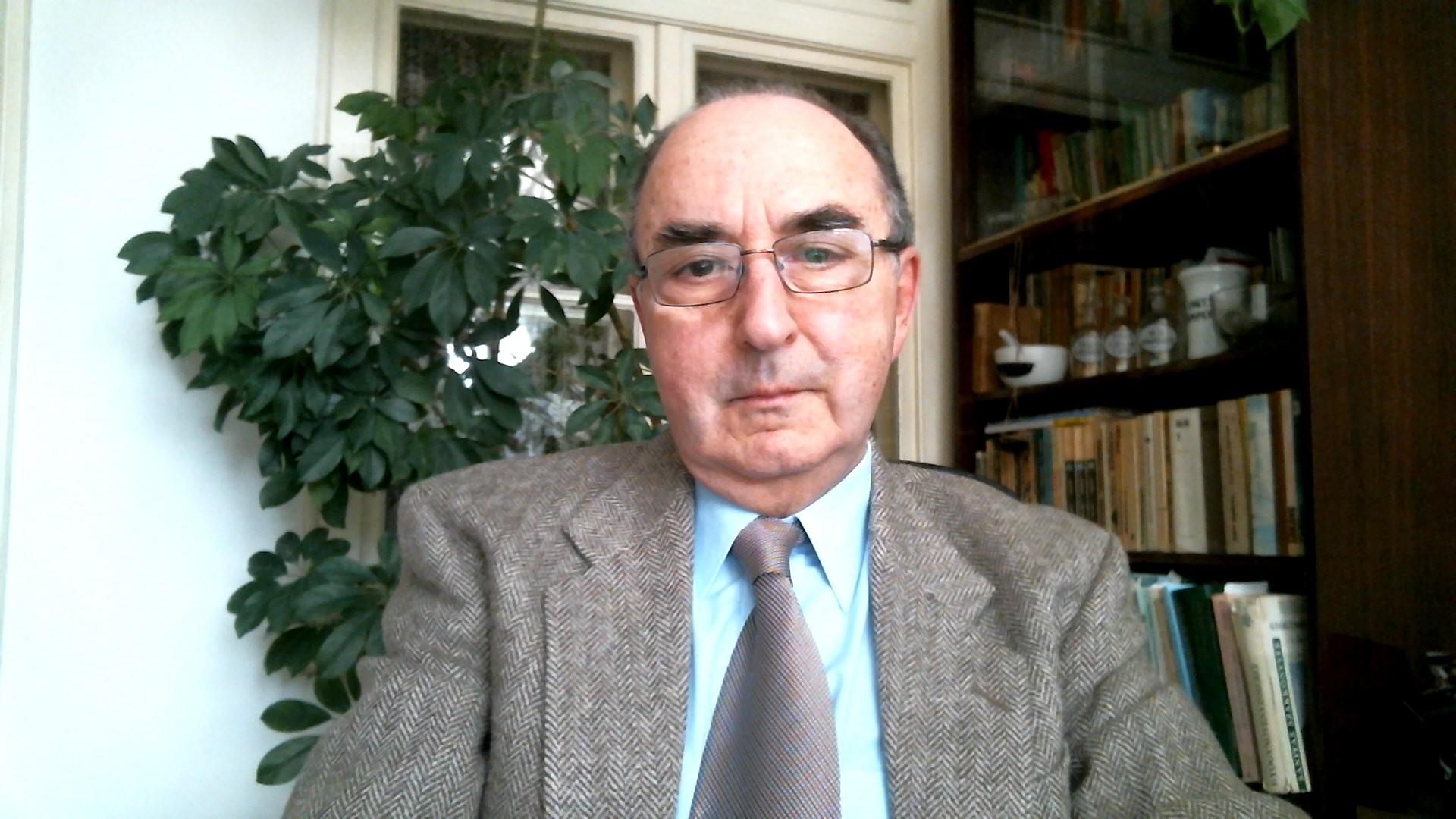
Title: Frankincense's Potential Impact on Brain Health
Plenary Speaker
Dr. Ladislau Rosenberg
Bio Quantum Academy
Canada
Abstract
Frankincense, an ancient resin sourced from Boswellia sp. trees, is garnering attention for its potential impact on brain health. This paper delves into the emerging body of research that suggests frankincense may hold neuroprotective properties, influencing various facets of cognitive well-being.The chemical complexity of frankincense, highlighted by compounds like boswellic acids, terpenes, and essential oils, forms the foundation for its potential impact on the brain. Boswellic acids, notably acetyl-11-keto-β-boswellic acid (AKBA), exhibit anti-inflammatory effects, potentially attenuating neuroinflammation—a hallmark of neurodegenerative disorders.Terpenes like alpha-pinene and limonene, contribute to the aromatic profile of frankincense and may have modulatory effects on neurotransmitter systems. These compounds, with their interactions in the brain, hint at potential cognitive benefits, including mood regulation and stress reduction. Alpha-thujene, may play a role in influencing neurobiological pathways related to mood and emotion. Preliminary studies suggest that the inhalation of frankincense essential oil may have anxiolytic and antidepressant effects, opening avenues for non-pharmacological interventions in mental health. Beyond its aromatic allure, frankincense compounds are being investigated for their potential to cross the blood-brain barrier. This raises intriguing possibilities for targeted delivery of neuroprotective agents, potentially influencing conditions like Alzheimer's and Parkinson's disease.The antioxidative properties of frankincense compounds, including polyphenols and flavonoids, add another layer to its neuroprotective potential. By scavenging free radicals and mitigating oxidative stress, frankincense may contribute to maintaining cellular health in the brain.
The cumulative evidence suggests that frankincense holds promise as a natural ally for brain health, and it is necessary to discover the intricate interactions between frankincense compounds and the potential applications in neuroprotection and mental well-being.
Biography
For over 45 years, Dr. Ladislau Rosenberg PhD was involved in research, education and practice in various fields of integrative medicine and he is recognized as a specialist in apitherapy, aromatherapy, phytotherapy and homeopathy. During the time, he was an Associate Professor at two important universities in Romania, the University of Medicine and Pharmacy in Targu Mures, Faculty of Pharmacy and the University “Lucian Blaga” of Sibiu, Faculty of Medicine. He is an expert in the history of pharmacy and honorary member of the Romanian Society for the History of Pharmacy and lecturer of the Romanian Society for Apitherapy, Phytotherapy and Aromatherapy and coordinator of health educational projects which promotes various natural therapies and their role in preventing and treating diseases. Now, he collaborates as Associate Professor with Bio Quantum Academy in Toronto, where he is the head of the Department of Phytotherapy&Medicinal Plants Research, within the Faculty of Integrative Medicine.

Title: Health-maintaining energy generated from mitochondria is not chemical energy ATP but microwaves: Verification by molecular modeling
Plenary Speaker
Prof. Shozo Yanagida
Osaka University
Japan
Abstract
We presented our research titled “Sun’s ray effects that enhance mitochondrial activity.” at the 9th Global Webinar on Traditional and Integrative Medicine: (July 22-24, 2022). Furthermore, we presented another research titled “Solar microwaves induce plant growth” at the 57th Annual Microwave Power Symposium (IMPI 57) (June 14, 2023, Denver, USA) and at AMPERE 2023 (September 12, 2023, Cardiff, UK).1
On November 15, 2023, on NHK BS 103's "Humanience" program, Professor Kei Nagashima of Waseda University interestingly stated that body temperature is maintained through thermogenesis by mitochondria.
Biography
Shozo Yanagida (Emeritus Professor of Osaka University since 2004) is a pioneer of molecular-structured solar cells, and now stay at the forefront with regards to density functional theory-based quantum chemisty molecular modeling of molecular aggregats. Now, he may be regarded as a molecular-structure chemist using density-functional theory. He presented a plenary lecture entitled “Carbon dioxide is by no means the cause of climate change, and solar radio radiation causes climate change. Forecast/Verification by Quantum Chemistry Molecular Modeling in a global conference. Many theoretical verification examples by molecular modeling can be found on the homepage of M3 Laboratory Co., Ltd. (https://www.m3lab.en/).
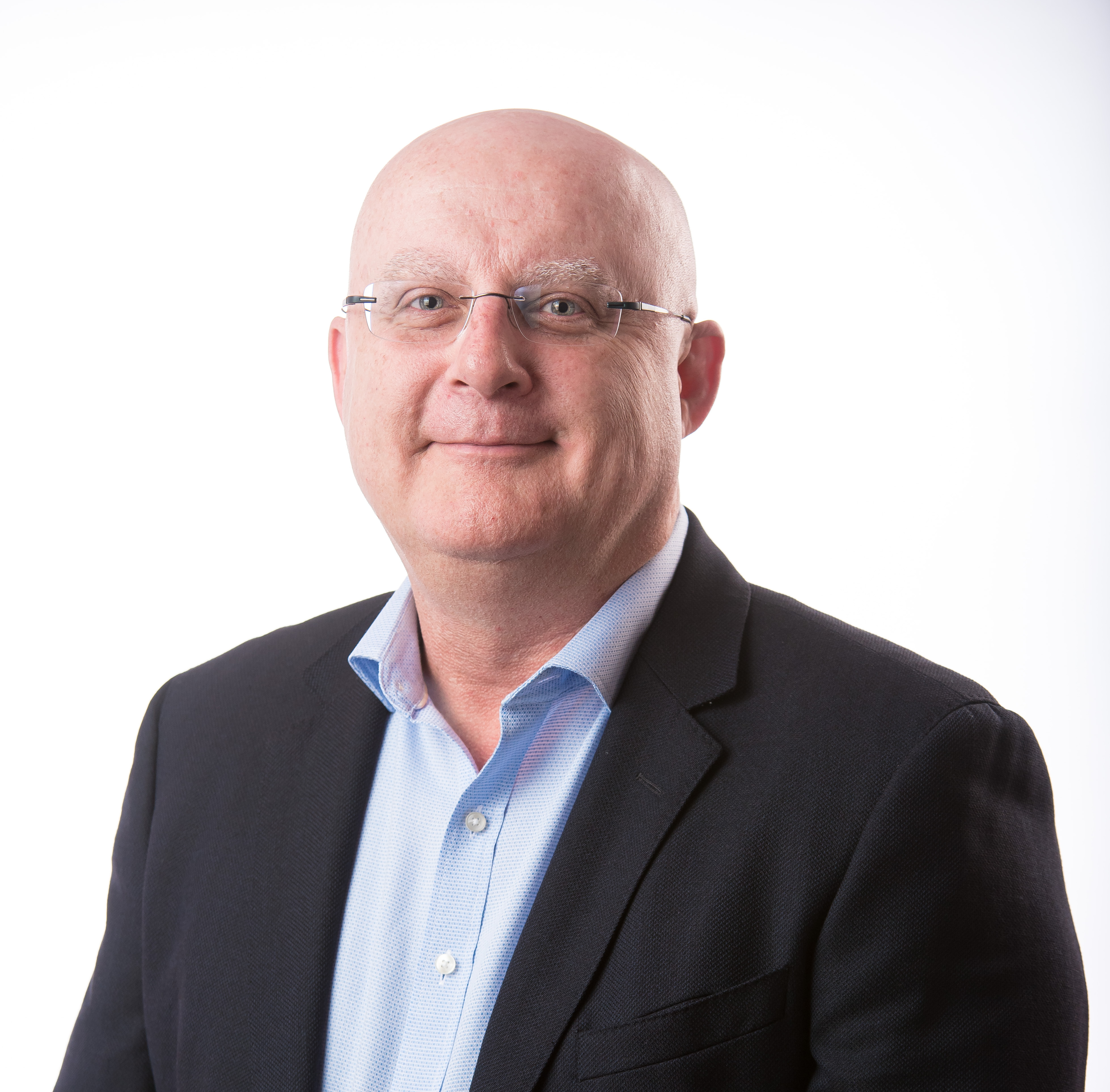
Title: The Singularity of Artificial Intelligence and Future Health Directions
Plenary Speaker
Dr. Sean Eastwood
Peel Chiropractic
Australia
Abstract
As machine learning approximates human intelligence, an explosion of innovation and discovery is predicted. It is referred to as the Singularity.
In time, Artificial Intelligence will be able to link all known data and information about human health and present a fully integrated, fully interoperable model of the mind-body complex.
Dr Eastwood will start this talk with the premise that we need to redefine “intelligence”. If we are not well intentioned in our dealings with others then we are not “intelligent”.
The same applies to Artificial Intelligence. Despite many positives of the technology there are many catastrophic dangers if the logical rules of computer programs are not consistent with the morals and ethics of a noble collective consciousness.
Prof Stephen Hawking summed this up perfectly when he is quoted as saying “The discovery of full Artificial Intelligence will be the greatest discovery in human history ... or the end of it!”
Biography
Dr Sean Eastwood has been a chiropractor in private practice for 20 years. Since 2013, he has been researching & developing the work of a now-deceased Australian software developer who claimed, and was never disproven, to have found "true" Artificial Intelligence (AGI) in 1999, based on the premise that the human thought process is a natural law like gravity. But computers don’t experience emotions or store unhealthy beliefs in a physical way. The result of Dr Sean's research & development are precise blueprints for thought and perception that accommodate all forms of physical, energy & light medicine. Originally an accountant and computer systems analyst, he retrained as a chiropractor to be eligible for post-graduate study in mind-body health. He is a certified practitioner of Neuro Emotional Technique (NET). Alan Turing, famous for shortening World War II by cracking German ciphers (as depicted in the movie The Imitation Game), merged mathematics, computer science, psychology and philosophy to create machine learning. Dr Sean's first book, Logically Accurate, Emotionally Healthy, and his online courses are an extension of Turing's work as it relates to human health.
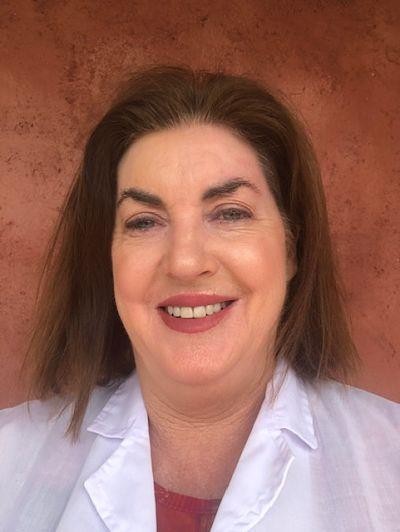
Title: Treatment of Arthritis with Apitherapy
Speaker
Dr. Bridget Goodwin
President Australian Apitherapy Association
Australia
Abstract
Arthritis is an extremely common degenerative disease that affects millions of people and in our global ageing population is a serious problem.
Conventional Western medicine approaches to treating arthritis conditions include non-steroidal anti-inflammatories and drugs such as Methotrexate, both of which have unfortunate side effects.
Discussion about alternative treatments or possible nutritional interventions are rarely discussed in the allopathic medicine context.
Apitherapy is the use of bee medicine that has been practiced for 4000 years in China as part of Traditional Chinese Medicine (TCM) and is in frequent use in the Chinese mainstream medical system, where TCM is regarded as an essential platform. Apitherapy is also practiced in approximately 80 countries around the world but is not officially recognized in Australia or the United States.
In countries that embrace Apitherapy, such as China, Arthritis is commonly treated with a combination of nutritional advice, TCM herbal medicine, acupuncture and Apitherapy “bee needle” as part of TCM acupuncture. The success of the treatments is well documented in the medical literature. In some countries where the method is not recognized patients have resorted to self treatment.
My presentation will explain the background of treating arthritis with Apitherapy and also present some firsthand case studies of Australians who have treated their own arthritic conditions with positive results.
Biography
Bridget Goodwin is a certified herbalist, and Apitherapist and is a founding member and President of the Australian Apitherapy Association. She is currently enrolled in a Post Doctoral Diploma in Integrative Medicine at Bio Quantum Academy, Canada. Bridget is preparing a thesis on non-toxic natural medicine treatments for cancer, most notably bee venom and photodynamic therapy using natural photosensitizers Bridget has a a post-graduate diploma in Health Sciences and is also completing a degree in Health Sciences (Naturopathy) from Torrens University, Australia. Bridget completed a Phd in 1996 on the Top Secret medical experiments using mustard gas on Australian soldiers during WWII. These experiments are now known to have been fundamental research for the introduction of chemotherapy. Chemotherapy followed hard on these experiments immediately after WWII, with many of the wartime scientists becoming oncologists. Her book on the subject, Keen As Mustard, was published by University of Queensland Press in 1998 and she is currently updating a second edition. Bridget also practices as a laser therapist and trains for www.dermaltherapycollege.com She has Cert III in Pathology Collection from Southern Pathology, NSW, 2023. Member of the Australian Association of Integrative Medicine Member of Naturopaths and Herbalists Association of Australia.

Title: Holistic Solutions for Health Optimization
Keynote Speaker
Dr. Oana-Codruta Miloicov Bacean
Holistic Lounge SRL- Center of Holistic Therapies
Romania
Abstract
Objective:
Holistic therapies offer a diverse range of approaches aimed at treating individuals as whole entities, addressing their physical, mental, emotional, and spiritual well-being. This presentation provides an overview of the objectives and efficacy of holistic therapies, emphasizing their growing importance in contemporary healthcare practices. By incorporating various modalities, holistic therapies strive to promote overall wellness and address underlying imbalances in the body. This abstract highlights the significance of integrating holistic approaches into mainstream healthcare, emphasizing the need for further research and evidence-based practices to validate their effectiveness. Through a comprehensive understanding of the objectives and efficacy of holistic therapies, healthcare professionals can better support patients in achieving optimal health outcomes and enhancing their quality of life.
Material and Method:
To achieve maximum benefits, we address the physical, emotional, and mental aspects of well-being. For the physical approach, we utilize the Therapeutic Frequency Generator Device, a patented technology recognized at the European level and awarded with 5 gold medals. This device serves as an adjunct in energetically balancing inflammations, infections, and various conditions.
In addressing the emotional and mental aspects, we utilize the biofeedback therapy, renowned for its holistic testing and therapy capabilities. Originally designed for emotional balancing of astronauts during space travel by NASA, the device employs various treatments and biofeedback techniques to achieve psycho-emotional balance. Additionally, our massage chair, with its patented massage technique from Japan, complements these approaches by promoting relaxation and stress reduction.
Results:
Holistic medicine offers a comprehensive approach to health, addressing the whole individual – physically, emotionally, mentally, and spiritually. By prioritizing health and balance through these approaches, individuals experience a multitude of positive changes. Physically, they may notice increased energy levels, improved weight management, and reduced risk of chronic diseases. Mentally and emotionally, they may experience reduced stress levels, enhanced mood, and overall well-being. These combined approaches lead to increased productivity, better sleep quality, and greater resilience to life's challenges, significantly enhancing quality of life and long-term fulfillment.
Conclusions:
Holistic medicine represents the concept of a comprehensive approach to health, addressing the whole individual: physically, emotionally, mentally, and spiritually. Through the integration of holistic therapies into mainstream healthcare, individuals can achieve optimal well-being and lead fulfilling lives.
Biography
Oana Codruta Bacean Miloicov, MD, PhD is a Senior Lecturer and a highly skilled medical practitioner: primary specialist of Family Medicine and specialist of Hygiene. With over 14 years of experience in educational leadership, she has served as a prominent figure in guiding and shaping the education of students in the field of hygiene at the esteemed “Victor Babes” University of Medicine and Pharmacy in Timișoara, Romania, Department 14th Microbiology, Discipline of Hygiene. Driven by her passion for holistic approaches, she also holds the position of Medical Management Director at the Center of Holistic Therapies and Research, a researcher with over 52 scientific publications and has authored two monographs, invention patent, projects, copyright protected concepts. In addition to the academic career, she is actively involved in practicing and promoting holistic therapies.

Title: The impact of gut health towards the treatment of ADHD in children
Speaker
Ine-Mari Bredekamp
CIDESCO, South Africa
UAE
Abstract
This abstract explores the interplay between gut health, sleeping patterns, and the treatment of Attention Deficit Hyperactivity Disorder (ADHD). By shedding the light to parents on how to treat their child as well as giving the ideas on changing the family dynamics to support both parent and child, Ine-Mari hope to help both parent and child understand the superpower of the ADHD child as well as changing the misconception about the phenomena.
Recent research suggests a two-way connection between gut health and ADHD, indicating that disruptions in stomach bacteria may worsen ADHD symptoms, while ADHD-related stress can harm the gut. Empowering parents as "first responders" by teaching them how to nourish and communicate with their ADHD children can reduce the stigma surrounding this diagnosis. Additionally, sleep issues are linked to both ADHD and gut problems, emphasizing the importance of understanding and addressing sleep disruption for individuals with ADHD. By educating parents on proper care and communication and recognizing the impact of sleep on ADHD, we can enhance conventional treatments. Prioritizing gut health and promoting healthy sleep habits provides a holistic approach to managing ADHD, recognizing the intricate connections within the body. This comprehensive strategy aims to alleviate the challenges associated with ADHD, fostering a more supportive environment for affected individuals.
Biography
Ine-Mari Bredekamp, a 1997 graduate of the Isa Carstens Health and Skin Care Academy in South Africa, holds a CIDESCO Health and Skin Care Diploma. Her CIDESCO final paper focused on stress's impact on daily life. Married to pilot Louis Bredekamp since 2004, she witnessed firsthand the effects of sleep disruption in aviation. Amid the COVID pandemic, her teenage son's ADHD diagnosis ignited her mission as a parent and health professional. Collaborating with experts like family medicine practitioner Ilse Onderweegs, they uncovered nutritional influences on ADHD symptoms. In a Global Webinar on Traditional and Integrative Medicine, Ine-Mari aims to share insights that empower parents worldwide in supporting their ADHD children to thrive.
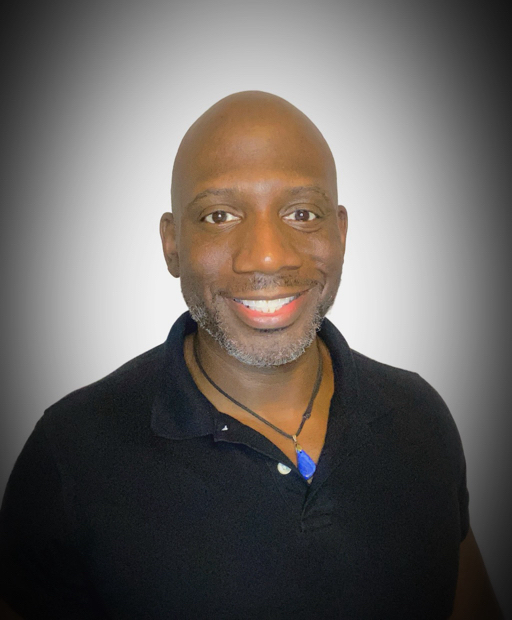
Title: Ayurveda: The Science of Wellness and Personal Responsibility
Speaker
Mr. Brandon Williams
Balance of Three
USA
Abstract
Ayurveda empowers individuals to take control of their well-being and achieve holistic wellness. It acknowledges personal responsibility and the significant impact of small changes on transformation. Combining ancient wisdom with modern validation, Ayurveda brings about revolutionary changes in adherents and inspires positive actions for long-lasting transformations. Ayurveda, an ancient system of medicine, promotes holistic well-being and supports individuals to become masters of their destinies. It recognizes the limitations of modern medicine and presents a path back to wholeness. While it is essential to validate scientifically, one should not undervalue the ancient wisdom of Ayurveda. Small changes can yield significant results, such as consuming warm lemon water for improved health. By emphasizing wellness over time and incorporating practices like yoga and pranayama, Ayurveda equips individuals to take charge of their wellbeing. It uses storytelling and archetypes to shape health journeys, recognizing the need for personal empowerment. Ayurveda offers a time-tested approach to authentic and lasting transformations, encouraging meaningful changes and personal responsibility. With further exploration, it has the potential to revolutionize day-to-day medicine and ignite ongoing positive action.
Biography
Brandon Williams, a retired logistics officer with 20 years of military experience, excels in coaching and training leaders from diverse backgrounds. Mentoring Afghan and Iraqi leaders during combat logistics operations, he has a proven track record of improving individuals and their output. With a Master of Business from the College of William and Mary and a Bachelor's degree in Religious Studies, Brandon brings a unique perspective to his coaching approach. Formerly a successful Pharmaceutical Manufacturing Manager and Logistics Terminal Manager, he is now pursuing certification as an Ayurvedic Lifestyle Coach through the esteemed Deepak Chopra Total Well-Being program, focusing on Health, Meditation, and Coaching.
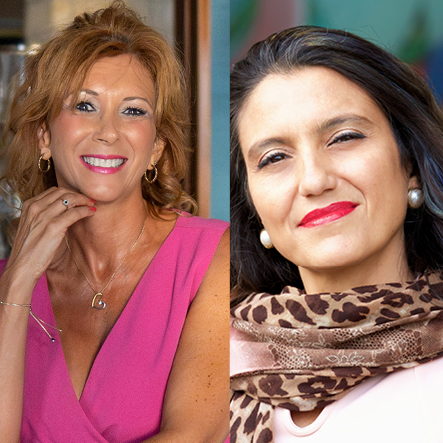
Title: Integrative Health & Trauma Recovery
Speaker
Helena Georgiou and Helen Argyrou
Cyprus
Abstract
The importance of embracing a holistic approach to trauma recovery, and the effective strategies for emotional healing...
Adopting a holistic approach is crucial when addressing trauma and embarking on a healing journey. Trauma support is a compassionate and empowering framework that acknowledges the trauma's effects on an individual's well-being. It guides them toward healing, resilience, and personal growth.
Generally, trauma is any sort of experience that causes someone a high degree of distress. However, trauma is also relative to the person experiencing it. Therefore, not every person will react to a traumatic event the same way. As such, there are many trauma therapy techniques to address a person’s unique challenges. A brain affected by trauma doesn’t always know how to tell the difference between something harmless and the past traumatic event. As a result, a person impacted by trauma may develop a variety of mental health disorders.
Typical sources of trauma:
-Sexual abuse/physical abuse/emotional abuse
-Childhood neglect
-Domestic violence
-Witnessing/experiencing traumatic events
-Mass and community violence events
-War
-Car accidents
Effective trauma therapy with a professional, is crucial to help and support people who have experienced trauma heal.
Post-Traumatic Stress Disorder (PTSD) is one of the more talked-about disorders that can result from trauma. However, many other common disorders can stem from trauma as well:
-Anxiety disorders
-Depressive disorders
-Panic disorders
-Personality disorders
In many cases, the symptoms brought on by trauma are extreme versions of healthy reactions to stress. Therefore, proper treatment is vital to the individual's mental health.
LATEST STATISTICS 2023:
-World Health Organization (WHO) estimated that 3.6% of the world population experienced PTSD in a given year.
-It’s estimated that one in 11 people will be diagnosed with PTSD in their lifetime.
-About one in three people who experience severe trauma will develop PTSD.
-Of people diagnosed with PTSD, about 22.3% fall into the category of having severe symptoms.
In 2014, Dutch clinician Bessel van der Kolk published the book, 'The Body Keeps the Score: Brain, Mind, and Body in the Healing of Trauma,' which examines the ways in which trauma “rewires the brain and changes the way people experience the world”.
Over the past decade, the use of integrative health modalities, such as mind-body interventions, art therapy, nutrition, and exercise, to treat stress-related mental health conditions which have been on the risse, including posttraumatic stress disorder (PTSD) in global populations has been increasing.
The use of integrative therapies for PTSD provides options for those who are not interested in traditional modalities, have limited access to traditional treatments, or are seeking a more comprehensive approach to managing their PTSD.
MOST POPULAR HOLISTIC THERAPIES:
-Yoga also holds promise for PTSD, given its roots in mindful movement and its effect on the autonomic nervous system, or its ability to correct imbalances known to be associated with PTSD
-Acupuncture may play a role in reregulating the autonomic nervous system after trauma, as well as treating the pain often experienced by trauma survivors.
-Qigong and Tai Chi may also assist in managing PTSD symptoms, given their positive effects on intrusive thoughts and concentration among trauma survivors.
-Art therapy, one of the oldest integrative health modalities, has been associated with a reduction in symptoms of PTSD
-Meditation programs such as mindfulness have been useful in PTSD patients;
-Various plant based compounds such as Ashwagandha or Chamomile can help reduce anxiety symptoms;
-Medical cannabis might be useful in selected PTSD patients
Here are some Psychotherapy trauma-related treatments:
1. Cognitive Behavioral Therapy (CBT) focuses on recognizing problematic thinking patterns and working to change them, which then helps change behavior patterns. This treatment requires a person to engage in weekly appointments to learn skills that can be used to manage their symptoms. Throughout the course of treatment, a person will practice skills outside of sessions. Meanwhile, the provider will make sure to address any barriers and highlight progress. Standard CBT traditionally takes 12 to 16 weeks.
2. Eye movement desensitization and reprocessing was originally designed in 1987 to alleviate the distress associated with traumatic memories such as post-traumatic stress disorder. EMDR is a unique form of psychotherapy designed to diminish negative feelings associated with memories.
3.Neuro-linguistic programming (NLP) is a pseudoscientific approach to communication, personal development and psychotherapy.
The 5 major principles of trauma care are:
-safety,
-choice,
-collaboration,
-trustworthiness
-empowerment.
Ensuring that the physical and emotional safety of an individual is addressed, is the first important step to providing a safe, healthy environment for the individual to heal.
Understanding that trauma can have long-lasting emotional, neurological, psychological, social, and biological effects and that the treatment path is “informed” by these past experiences, the therapists requires a strong sense of empathy .
Biography
Helena Georgiou Helena Georgiou is a powerhouse advocate for those who have experienced trauma. As the the founder of BraveHeart, she is dedicated to empowering survivors of abuse and has become a leading voice in the breaking the silence. Helena's journey has been shaped by her own experiences of molestation, using them as a catalyst for positive change to dedicate her life now to aid others who have faced similar challenges. As a Transformational speaker, coach and advocate, Helena has reached countless individuals with her powerful message of courage. Helena presented her public speech on Secrets, Truth & Tenacity at the 'Women's Integrative Health Event' in Cyprus, by Heleniq Argyrou. Helena has been featured in numerous publications, including Business Fit Magazine, Daily Inspired Life magazine & Purpose Driven Entrepreneur Magazine. She has appeared on various podcasts, such as 'Bringing The World Together' by Andrea Mason, 'Wounds to Wisdom' by Peggy McIntyre and 'Domestic Violence & Women, by Women of Truth. Radio show interviews include, 'Women of Power' by Chrissie Sheppard. Helen Argyrou: Born and bred in Africa Helen is an award-winning global visionary, innovative clinical psychologist and speaker specializing in the Enneagram for Optimising Leadership Excellence. As a Neuroscience FlowMojo™ Entrainment Researcher - a focus that evolved from her multiperspectivity, fascination with the sound energy medicine of the primordial pulse and interest then in how rhythm advances consciousness, she became known for her ability to merge spirituality with science. Her interest in the politics and construction of identity developed into a book about self-deception and another on the way about how to construct ourselves for success. She works as a mentor and executive coach globally and conference founder, speaker trainer and curator for Women of Truth which she founded in 2015 as Yinalthea in Cyprus. This movement grew to the Netherlands and now awards 50 Integrative Health Innovation leaders in Dubai, elevating them to galvanize their global impact. Expect next her Xtravisionaries Project with her Luminary Leaders partners in Asia, which refines pioneers by helping them expand their bandwidth for epic times which premiers on you tube every 21st of each month with her 'Finger on the Pulse' World Vibe check.
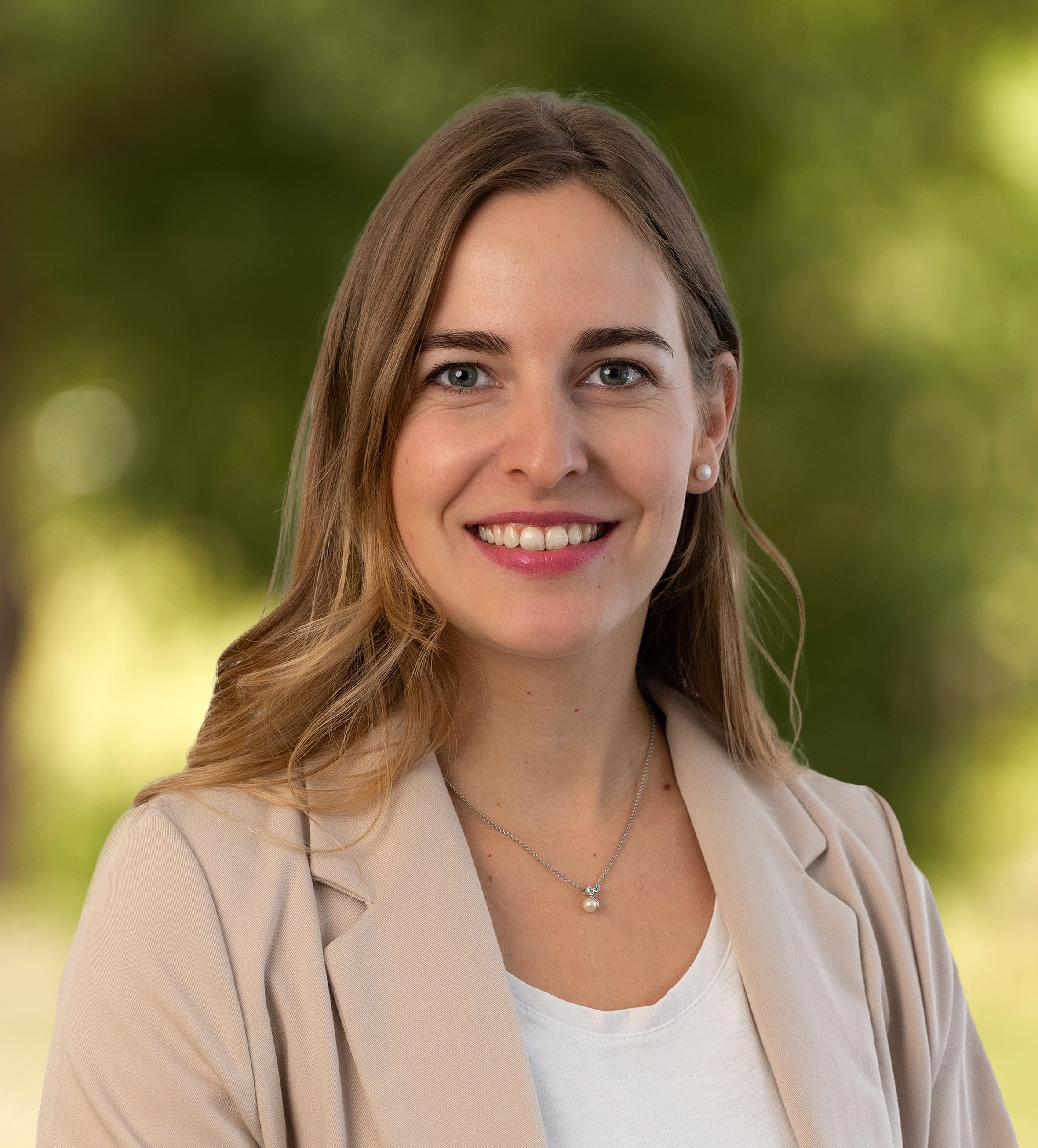
Title: Harnessing the Therapeutic Potential of Mistletoe Extracts in Cancer Management
Speaker
Sonja Bernet
University of Westminster
Switzerland
Abstract
Mistletoe therapy, an integral component of complementary and alternative medicine, has garnered increasing attention for its potential positive impact on cancer treatment outcomes. This presentation aims to summarize the current evidence regarding the beneficial effects of mistletoe therapy in cancer management, spanning both preclinical studies and clinical trials.
Preclinical investigations have elucidated the multifaceted mechanisms underlying mistletoe extracts' therapeutic efficacy, including immunomodulation, induction of apoptotic cell death, and inhibition of tumor angiogenesis. Notably, mistletoe extracts derived from Viscum album have demonstrated potent anticancer properties, targeting various signaling pathways implicated in tumor progression and metastasis.
Clinical trials have provided compelling evidence supporting the positive use of mistletoe therapy in cancer patients. Patients receiving mistletoe extracts alongside conventional treatments have reported improvements in cancer-related symptoms, including fatigue, pain, and nausea. Moreover, mistletoe therapy has been associated with enhanced quality of life, as evidenced by improvements in physical functioning, emotional well-being, and social interactions.
Furthermore, mistletoe therapy has shown promise in modulating the adverse effects of chemotherapy and radiotherapy, such as myelosuppression and mucositis, thereby improving treatment tolerability and patient adherence. Importantly, mistletoe therapy's immunomodulatory effects have been implicated in enhancing patients' immune function, potentially contributing to better treatment outcomes and reduced risk of disease recurrence.
While the existing body of evidence supports the positive role of mistletoe therapy in cancer management, further research is warranted to optimize treatment protocols and explore potential synergies with new conventional therapies. Overall, mistletoe therapy represents a promising adjunctive approach in cancer care, offering holistic benefits that extend beyond traditional symptom management to encompass improved quality of life and enhanced therapeutic outcomes for cancer patients.
Biography
Sonja Bernet is a Medical Herbalist who has completed her Life Science degree at Westminster University in London. She has then specialized in complementary therapies for cancer patients and is working as a therapist and medical representative in Switzerland and Germany.

Title: Ayurveda and Nanotechnology
Keynote Speaker
Dr. Shivani Gavande
Parul Institute of Ayurved & Research, Vadodara
India
Abstract
Ayurveda is ancient scientific way of living long and healthy. Prevention is better than cure is the moto of Ayurveda system of healing. Ayurveda focus on individualized medicine. Ancient scientists of Ayurveda had done lot of research work on herbal and Herbo-mineral drugs, dosage delivery and improvisation of potency of drugs. Concept of reduction of particle size is quoted in Charak Samhita (1500 B.C) while explaining Lohadi Rasayana.In 7th century, Concept of Bhasma is the most ancient application of Nano-medicine.
To increase the herbal potency of herbal drugs, herb is triturated with decoction of same medicine where energy remains drug disappears. Process of Shodhana, Nirvapana,Bhavana, Jarana, Maran,Sookshmikaran, Mardana,Putapaaka,Bhasma nirmaan are various types of procedures which are conducted for preparation nano particles in Ayurveda.There is concept of sookshma aushadhi chikitsa where medicine is given in very minute form, nano particles for effective results. They absorb fast in microcirculation and they are cost effective also.
Biography
Dr. Shivani Sanjeev Gavande is Ph.D. in Ayurveda, Masters in Kayachikitsa-Ayurveda and a Bachelor of Ayurvedic Medicine and Surgery. She has received Hari Ananta Gold Medal for her research work under Ayurvidya, New Delhi. She is the Professor of Kayachikitsa and PhD guide at Parul Institute of Ayurved and Research, Vadodara, Gujarat, India and had been faculty and examiner of Maharashtra University of Health Sciences, Nasik. She is having 21 years of clinical and academic experience. Dr.Shivani Sanjeev Gavande has been resource person in various Ayurveda workshops and seminars. Also she has shared her valuable clinical experiences and Ayurvedic concepts in various national and international conferences. She has published her research articles in peer reviewed national and international journals. She was invested Ph.D. for her work in Enhancement of quality of life in patients having cancers of female genital organs. She has been worked for teenagers since last 23 years and socially active for women empowerment and environmental awareness. She is healer and councilor of mindfulness program, satwavajaya chikitsa also volunteer of Aniruddha Academy of Disaster management.
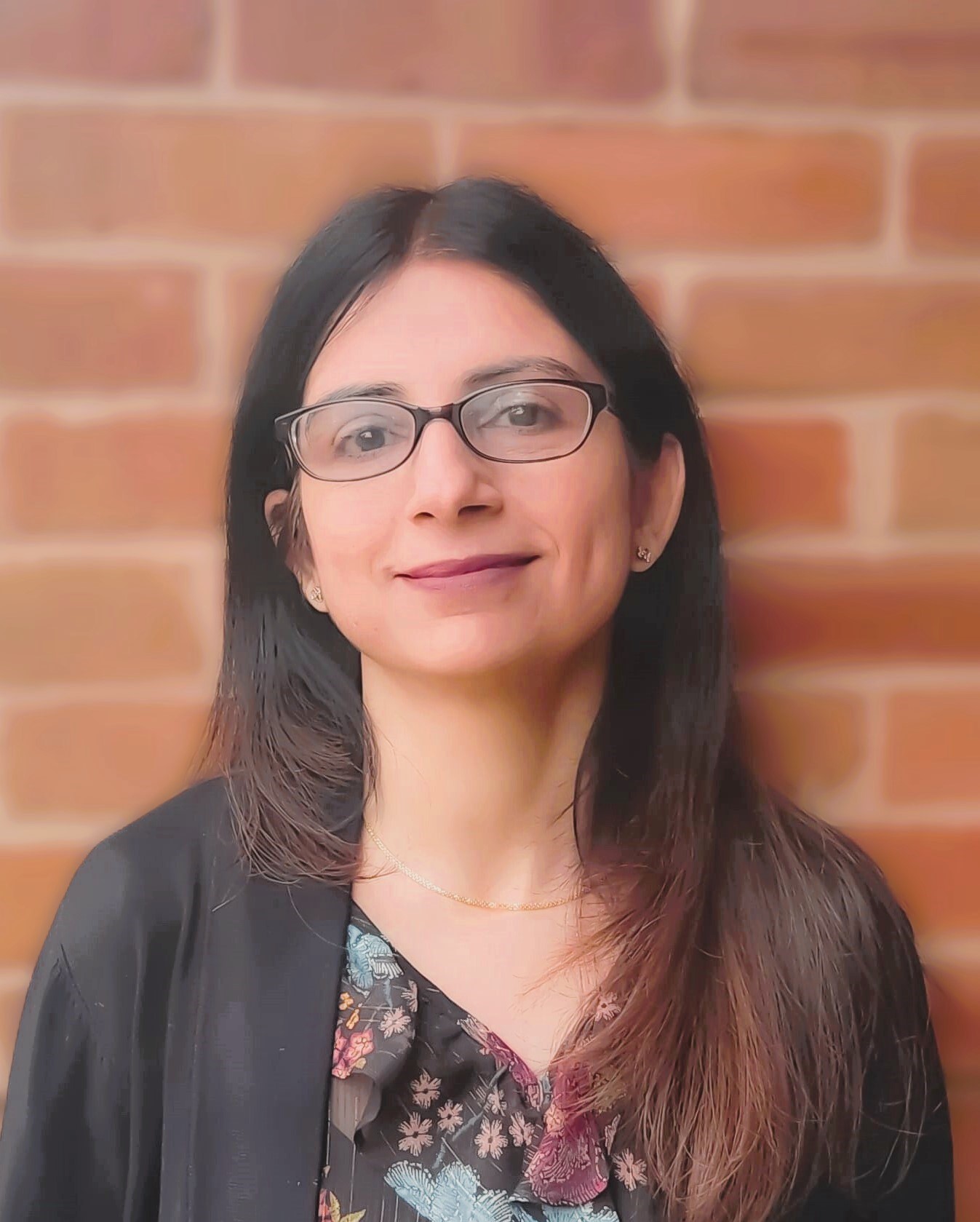
Title: Mindfulness-Based Interventions Modulating Chronic Low Back Pain
Speaker
Dr. Ruchi Kukreja
Bucks County Center for Integrative Medicine (BCIM)
USA
Abstract
Chronic low back pain affects millions of people worldwide. It is a leading cause of disability and reduced quality of life. It often travels in a pack with other problems impacting physical, mental, and social functioning. It is frequently treated with opiates that offer no long-term benefit. There are several non-pharmacological treatment alternatives that can help manage chronic back pain. Mindfulness meditation has been shown to have other numerous health benefits. There is moderate evidence that mindfulness-based interventions (MBIs) such as Mindfulness-based Stress Reduction (MBSR) lower the perception of pain, improve functioning and overall well-being. By integrating MBIs and other therapeutic interventions in a multi-disciplinary pain management plan, clinicians can improve treatment outcomes, potentially decrease pain-related medication utilization, and empower individuals to manage their pain more effectively.
Biography
Dr. Ruchi Kukreja is board certified family physician with fellowship in Integrative Medicine. She completed her medical school training from King George Medical College, in India and Family Medicine residency in 2012 from St. Francis Hospital in Delaware, USA. After completing residency, she worked as an Assistant professor at Temple University school of medicine in Philadelphia and then with Jefferson Health in Pennsylvania as a primary care physician. She completed one-year Integrative Medicine fellowship training last year from University of Michigan, Ann Arbor and Mindfulness-based stress reduction (MBSR) teacher training (level 1) with Brown University. She believes in whole health approach to health and healing and has a passion for empowering patients with tools for wellness. She is currently working as an Integrative Medicine Physician at Bucks County Center for Integrative Medicine (BCIM) in Pennsylvania, USA.
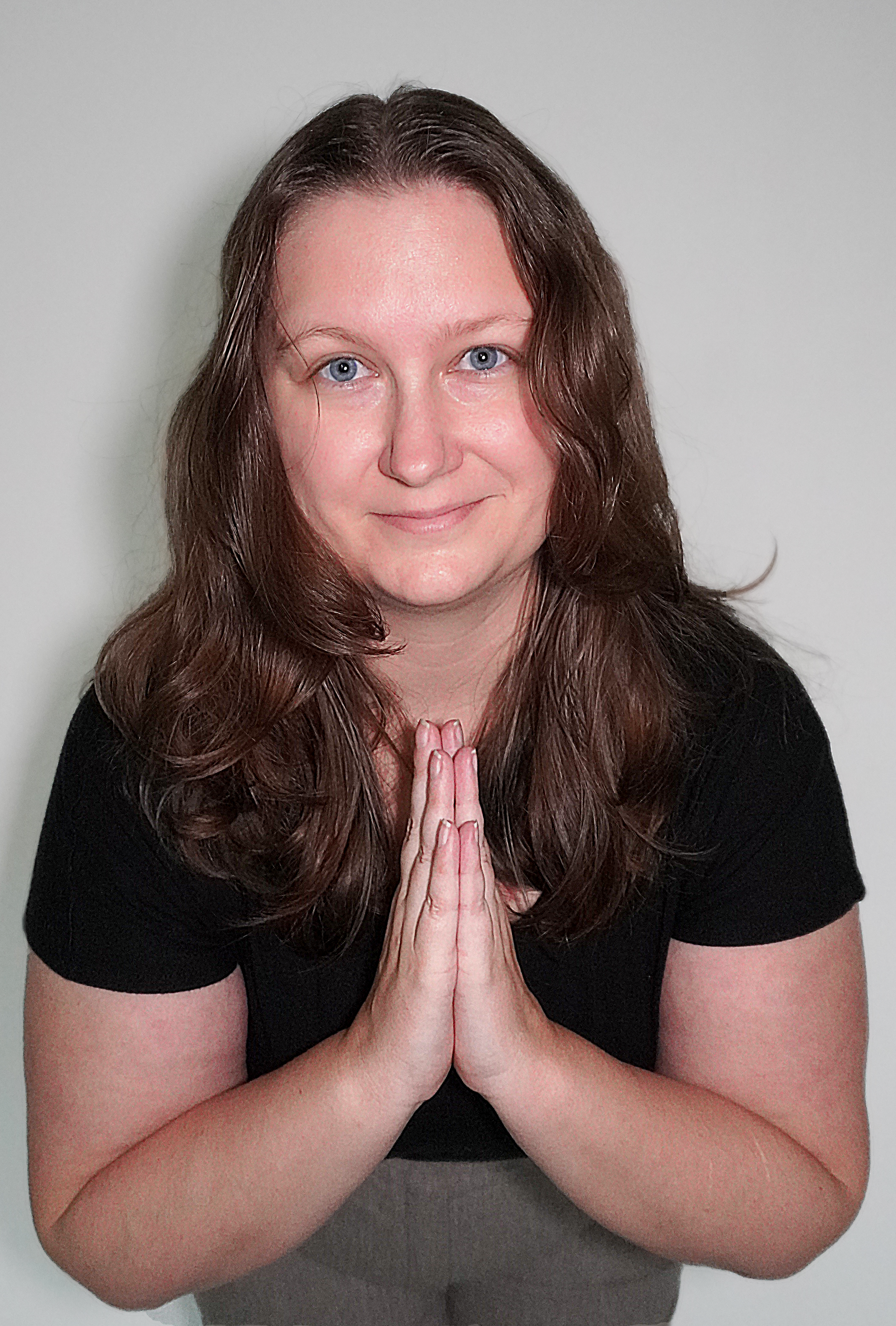
Title: Psychedelic Integration through the Lens of Interpersonal Neurobiology
Speaker
Dr. Elizabeth Shuler
Inner Evolution Coaching
Belgium
Abstract
This presentation explores the concept of psychedelic integration through the lens of Interpersonal Neurobiology (IPNB), a framework that emphasizes the linking of differentiated parts within a system. By grounding the integration process within IPNB's domains, we gain a comprehensive framework to guide individuals through this transformative journey. This emergent approach ensures that integration is not confined to a specific domain but rather permeates all aspects of life – mind, body, and relationships. Through this holistic perspective, practitioners can effectively navigate the complexities of integration and unlock the profound healing and growth that lies within.
Biography
Elizabeth Shuler completed her PsyD from California Southern University with her thesis titled Implementing Psychedelic Assisted Therapy in Telemental Health: A Systematic Review. She received her MSc in Mental Health Counseling from the University of Wyoming. She is a certified transformational coach, certified yoga therapist, and Reiki Master. She has worked in Jordan, China, and now Belgium.

Title: Ethiopian Medicinal Plants “Teff (Eragrostis tef) and Garlic (Allinum sativum)” as a Traditional and Food Medicine as well as the High Impact of AgroEconomic Value of them in Ethiopia
Keynote Speaker
Dr. Aderajew Waka
Charite Medical University
Germany
Abstract
Introduction of Teff (Eragrostis tef) as Ethiopian Origin:
Teff, scientifically known as Eragrostis tef, is an ancient grain indigenous to Ethiopia where it has been cultivated for thousands of years. It is a staple crop in these regions and plays a significant cultural, dietary, and economic role. Teff is a member of the grass family (Poaceae) and is characterized by its small grains, which are similar in size to poppy seeds.Teff is believed to have originated in Ethiopia, where it has been cultivated since ancient times. Its cultivation predates even the domestication of other major cereal grains like wheat and barley. The word "teff" is thought to be derived from the Amharic word "teffa," which means "lost," referring to the small size of its grains, making them difficult to harvest.
Characteristics:
Ethiopian Teff, scientifically known as Eragrostis tef, encompasses several varieties that vary in color, size, and agronomic characteristics. While there are numerous varieties of Teff cultivated in Ethiopia, they can generally be categorized into two main types based on grain color White and Brown.
Grain Size: Teff grains are tiny, about the size of a poppy seed, and come in various colors, including white, red, and brown. White varieties are the most common.
Nutritional Profile: Despite its small size, Teff is packed with nutrients. It is an excellent source of protein, dietary fiber, B vitamins (such as thiamine and riboflavin), minerals (such as calcium, iron, and magnesium), and antioxidants. Additionally, Teff is gluten-free, making it suitable for individuals with celiac disease or gluten intolerance.
Climatic Adaptability: Teff is known for its remarkable tolerance to diverse environmental conditions, including extremes of temperature, altitude, and soil type. It thrives in both highland and lowland regions and is well-suited to Ethiopia's varied agroecological zones.
Cultural Significance: Teff holds immense cultural significance in Ethiopia, where it is the primary ingredient in the national dish, injera. Injera is a fermented flatbread that serves as a staple food and an integral part of Ethiopian cuisine and social gatherings.
Global Interest:In recent years, Teff has garnered increasing attention beyond Ethiopia and beyond due to its exceptional nutritional value, gluten-free status, and potential as a sustainable crop. It has gained popularity as a health food and alternative grain in various parts of the world, leading to increased demand and commercial production outside of its native region.
In summary, Teff is an indigenous unique and versatile grain with deep roots in Ethiopian culture and agriculture. Its nutritional richness, cultural importance, and adaptability make it a valuable crop with the potential to contribute to global food security and nutrition. The agro economic value of Ethiopian Teff is very high not only in Ethiopia but also globally. It will be one of the best prestigious and sought grain in the world. Long live Ethiopian farmers to keep this indigenous original Teff traditionally and bring it one of the best healthy grains in the world in this very dynamic high populated era. God bless the Ethiopian Farmers forever!!!
Ethiopian Medicinal Plants “Teff (Eragrostis tef):
In Ethiopia, Teff (Eragrostis tef) holds a significant cultural, dietary, and medicinal importance. While Teff is primarily known as a staple grain used in traditional Ethiopian cuisine, it also has several medicinal properties.It's essential to note that scientific research on its specific medicinal effects is limited. However, its nutritional composition and cultural significance underscore its potential as a valuable component of a healthy diet with potential health benefits.
Digestive Health: Teff is rich in dietary fiber, which promotes digestive health by preventing constipation, regulating bowel movements, and supporting overall gastrointestinal function
Energy Boost: Teff is a good source of complex carbohydrates, which provide sustained energy release.
Anemia Management: Teff contains notable amounts of iron, an essential mineral for red blood cell production and oxygen transport
Postpartum Recovery: In Ethiopian culture, Teff is traditionally consumed by women during the postpartum period to aid in recovery and replenish nutrients lost during childbirth. Its nutrient-rich profile, including iron and other minerals, supports overall health and vitality during this critical time. Bone Health: Teff contains calcium and other minerals important for bone health. Teff consumption may be recommended to strengthen bones and prevent conditions like osteoporosis.
Diabetes Management: Teff has a low glycemic index, meaning it does not cause a rapid spike in blood sugar levels after consumption.
The medical value of Teff:
Teff is a gluten-free grain that has gained attention for its potential health benefits. Here are some of its medical values:Teff is rich in nutrients, including protein, dietary fiber, B vitamins (such as thiamine and riboflavin), and minerals (such as calcium and iron). This makes it a valuable addition to diets, especially for individuals with dietary restrictions or deficiencies. It is Gluten-Free naturally and making a suitable grain for individuals with celiac disease or gluten intolerance. Teff is also helpful for blood sugar control, digestion, healthy heart, weight management, bone health, antioxidant properties, energy supplement for athletic performance, absorption of iron and etc.
The relation of Immunology and Teff:
The relationship between immunology and Teff, the grain, primarily lies in the potential impact of Teff consumption on immune function and overall health. While Teff itself is not directly involved in immunological processes like an immune-boosting supplement or medication, its nutritional composition can play a role in supporting immune health indirectly. As part of a balanced diet, Teff can contribute to maintaining a healthy immune system and reducing the risk of immune-related disorders. However, individual responses may vary, and it's essential to consider overall dietary patterns and lifestyle factors in supporting immune health. Here's how Teff and immunology intersect: Nutritional support, Anti-inflammatory properties, Gut health, Blood sugar regulation and overall health promotion. The role of Teff by B- cells and T – cells:
The role of Teff, the grain, in modulating B-cells and T-cells, which are key components of the immune system, primarily relates to its impact on overall immune health through its nutritional composition.
While Teff itself does not directly interact with B-cells and T-cells in the same way as immunomodulatory drugs or compounds, its nutrients and bioactive components can influence immune function indirectly. While Teff's impact on B-cells and T-cells is primarily indirect through its nutritional and physiological effects, its role in promoting overall immune health is significant. Incorporating Teff into a balanced diet alongside other nutrient-rich foods supports the proper functioning of the immune system and helps protect against infectious diseases and immune-related disorders. However, individual responses may vary, and it's essential to consider overall dietary patterns and lifestyle factors in supporting immune health.
The effect of Teff on gluten:
Teff is inherently gluten-free, which means it does not contain gluten, a protein composite found in wheat, barley, rye, and related grains. This characteristic makes Teff an excellent alternative for individuals with celiac disease, gluten sensitivity, or those choosing to follow a gluten-free diet for other health reasons. Here's how Teff's gluten-free nature affects individuals with gluten-related conditions:
Celiac Disease: Celiac disease is an autoimmune disorder characterized by an immune reaction to gluten. In individuals with celiac disease, consuming gluten-containing foods triggers an immune response that damages the lining of the small intestine, leading to inflammation, malabsorption of nutrients, and various symptoms such as diarrhea, abdominal pain, and fatigue. Since Teff does not contain gluten, it is safe for individuals with celiac disease to consume as part of a gluten-free diet.
Non-Celiac Gluten Sensitivity: Some individuals may experience symptoms similar to those of celiac disease when consuming gluten-containing foods but do not have the characteristic intestinal damage seen in celiac disease. This condition is known as non-celiac gluten sensitivity (NCGS). For individuals with NCGS, avoiding gluten can help alleviate symptoms. Teff provides a gluten-free alternative that allows these individuals to enjoy grains without triggering adverse reactions.
Wheat Allergy: Wheat allergy is an immune-mediated reaction to proteins found in wheat, distinct from gluten intolerance or celiac disease. Individuals with wheat allergy must avoid wheat and wheatderived products but can safely consume gluten-free grains like Teff.
Gluten-Free Diet: Some people choose to follow a gluten-free diet for reasons other than medical necessity, such as perceived health benefits or dietary preferences. Teff offers a nutritious and versatile gluten-free option for individuals adhering to a gluten-free lifestyle.
In summary, Teff's gluten-free nature makes it a valuable grain for individuals with celiac disease, gluten sensitivity, wheat allergy, or those opting for a gluten-free diet. It provides a nutritious alternative to gluten-containing grains and can be incorporated into a variety of dishes to meet dietary needs and preferences. However, it's essential for individuals with celiac disease or gluten-related conditions to ensure that Teff and Teff-based products are sourced from reputable sources to avoid potential cross-contamination with gluten-containing grains during processing.
Which vitamin , minerals and trace elemnts has Ethiopian Teff:
Ethiopian Teff is a highly nutritious grain, rich in various vitamins, minerals, and trace elements.
Vitamins: Vitamin B1 (Thiamine): Important for energy metabolism and nerve function.Vitamin B2 (Riboflavin): Essential for energy production and maintaining healthy skin and eyes.Vitamin B3 (Niacin): Supports metabolism and nervous system function.Vitamin B6 (Pyridoxine): Involved in amino acid metabolism and neurotransmitter synthesis.Vitamin B9 (Folate): Vital for DNA synthesis and cell division, especially important during pregnancy.Vitamin E: Acts as an antioxidant, protecting cells from oxidative damage.
Minerals: Iron: Essential for the production of hemoglobin and oxygen transport in the blood.Calcium: Important for bone health, muscle function, and nerve transmission.Magnesium: Required for numerous enzymatic reactions in the body, including energy metabolism and muscle function.Phosphorus: Plays a role in bone and teeth formation, as well as energy metabolism.Zinc: Involved in immune function, wound healing, and DNA synthesis.Potassium: Necessary for maintaining fluid balance, muscle function, and nerve transmission.Copper: Aids in iron metabolism, connective tissue formation, and antioxidant defense.Manganese: Supports bone health, carbohydrate metabolism, and antioxidant function.Selenium: Acts as an antioxidant and is important for thyroid function and immune health.
Trace Elements:Molybdenum: Functions as a cofactor for enzymes involved in amino acid metabolism.Chromium: Helps regulate blood sugar levels and enhances insulin sensitivity.Cobalt: Essential component of vitamin B12, which is important for red blood cell production and neurological function.Silicon: Plays a role in bone health, connective tissue formation, and collagen synthesis.
These nutrients contribute to the overall nutritional value of Teff, making it a valuable addition to a balanced diet. Additionally, Teff is gluten-free, making it suitable for individuals with celiac disease or gluten intolerance.
Which protein and amino acid has Ethiopian Teff?
Ethiopian Teff is a good source of protein, and it contains a variety of essential and non-essential amino acids. The protein content of Teff can vary depending on factors such as the variety of Teff and growing conditions, but on average, it contains approximately 8-11% protein by weight. Teff's protein profile makes it a valuable source of amino acids, particularly lysine, which is often limited in other cereal grains like wheat and rice. Including Teff in the diet can help diversify protein intake and provide a range of essential amino acids necessary for overall health and well-being.
Here are some of the essential amino acids found in Teff:Lysine,Leucine, Isoleucine, and Valine (Branched-Chain Amino Acids, BCAAs), Phenylalanine and Tyrosine, Methionine,Threonine. Tryptophan,Histidine, Arginine,Isoleucine and Valine.
The value of Ethiopian Teff for DNA synthesis:
Ethiopian Teff, like other whole grains, contributes to DNA synthesis and overall cellular health through its nutritional content. By providing these essential nutrients and antioxidants, Ethiopian Teff contributes to DNA synthesis and overall cellular function. Including Teff in the diet as part of a balanced and nutritious eating pattern supports optimal cellular health and may help maintain DNA integrity.
Here's how Teff's nutritional value supports DNA synthesis:Folate (Vitamin B9): Teff is a good source of folate, a B-vitamin essential for DNA synthesis and repair. Folate is crucial for the production and maintenance of new cells, including red blood cells, and plays a critical role in preventing neural tube defects during fetal development.Iron: Teff contains iron, which is necessary for the formation of hemoglobin, a protein in red blood cells that carries oxygen throughout the body. Adequate iron intake ensures oxygen delivery to cells, including those involved in DNA synthesis and repair.Zinc: Zinc is an essential mineral involved in various cellular processes, including DNA synthesis and repair. It is a
cofactor for enzymes required in DNA replication and transcription. Teff provides zinc, contributing to these vital cellular functions.Magnesium: Magnesium is involved in hundreds of biochemical reactions in the body, including those related to DNA replication and repair. It acts as a cofactor for enzymes involved in these processes. Teff contains magnesium, supporting cellular activities essential for DNA synthesis.B Vitamins: Teff contains various B vitamins, including thiamine (B1), riboflavin (B2), niacin (B3), pyridoxine (B6), and cobalamin (B12), which are necessary for energy metabolism and cellular processes. These vitamins play indirect roles in supporting DNA synthesis by providing energy and participating in biochemical pathways.Antioxidants: Teff contains antioxidants such as vitamin E and polyphenols, which help protect cells from oxidative damage. Oxidative stress can lead to DNA damage, mutations, and impaired DNA synthesis. By neutralizing free radicals, antioxidants in Teff support cellular health and DNA integrity.
Celiac disease and the clinical symptoms of it:
Celiac disease is an autoimmune disorder characterized by an abnormal immune response to gluten, a protein found in wheat, barley, rye, and their derivatives. When individuals with celiac disease consume gluten, their immune system reacts by damaging the lining of the small intestine. Over time, this immune-mediated damage can lead to various gastrointestinal symptoms and impair the absorption of nutrients, resulting in nutritional deficiencies and other systemic complications.
Clinical Symptoms:The clinical presentation of celiac disease can vary widely among individuals, and some individuals may experience symptoms while others may be asymptomatic (referred to as "silent" celiac disease). Common symptoms of celiac disease include:
- Gastrointestinal Symptoms:
- Abdominal pain and cramping
- Diarrhea
- Constipation
- Bloating and gas
- Nausea and vomiting
- Malabsorption Symptoms:
- Weight loss
- Fatigue and weakness
- Anemia (due to iron deficiency)
- Bone pain or joint pain (due to calcium and vitamin D deficiency)
- Dental enamel defects
- Peripheral neuropathy (numbness or tingling in the extremities) 3. Dermatological Symptoms:
- Dermatitis herpetiformis: a chronic skin rash characterized by itchy, blistering lesions, typically found on the elbows, knees, buttocks, and scalp.
4. Other Symptoms:
- Delayed growth or failure to thrive in children
- Reproductive issues, such as infertility or miscarriage
- Neurological symptoms, such as headaches or depression
It's important to note that individuals with celiac disease may not necessarily present with gastrointestinal symptoms and may instead experience symptoms related to malabsorption, dermatological issues, or other systemic complications.
Which immune cells are attacked by gluten?
In individuals with celiac disease, gluten triggers an abnormal immune response that leads to damage in the lining of the small intestine. The immune reaction primarily targets specific immune cells within the intestinal mucosa, as well as the structures they interact with. Overall, the immune response to gluten in celiac disease involves a complex interplay between various immune cells, leading to inflammation, tissue damage, and the characteristic symptoms associated with the condition. The identification of these immune cells and their interactions provides insights into the pathogenesis of celiac disease and potential targets for therapeutic intervention.
The key immune cells involved in the immune response to gluten in celiac disease include: T-cells (T lymphocytes), Intraepithelial Lymphocytes (IELs), Antigen-Presenting Cells (APCs), B-cells (B lymphocytes).
The role of teff for pregnancy and ovulation:
Teff, a gluten-free whole grain native to Ethiopia, can play a beneficial role in supporting pregnancy and ovulation due to its nutritional composition. Here's how Teff may contribute to reproductive health:
Folate Content: Teff is a good source of folate (vitamin B9), which is crucial for fetal development, especially during the early stages of pregnancy. Adequate folate intake helps prevent neural tube defects and other congenital abnormalities in the developing fetus. Incorporating folate-rich foods like Teff into the diet before conception and during pregnancy is recommended to support maternal and fetal health.
Iron Content: Iron deficiency is common among pregnant women and can lead to anemia, which poses risks for both maternal and fetal health. Teff contains iron, an essential mineral for the production of hemoglobin and red blood cells. Including iron-rich foods like Teff in the diet can help prevent or alleviate iron deficiency anemia during pregnancy, supporting oxygen transport to tissues and optimal fetal growth.
Calcium and Magnesium: Teff provides calcium and magnesium, minerals important for bone health and muscle function. During pregnancy, calcium supports fetal skeletal development, while magnesium helps regulate blood pressure and may reduce the risk of preterm labor and preeclampsia. Consuming foods rich in calcium and magnesium, such as Teff, can contribute to maternal and fetal well-being.
Complex Carbohydrates: Teff is a complex carbohydrate with a low glycemic index, meaning it releases glucose into the bloodstream gradually, providing sustained energy without causing rapid spikes in blood sugar levels. Stable blood sugar levels are important for overall health and may help regulate menstrual cycles and ovulation, supporting fertility.
Protein: Teff contains protein, which is essential for tissue repair, hormone synthesis, and overall growth and development. Including protein-rich foods like Teff in the diet supports maternal tissue repair during pregnancy and provides amino acids necessary for fetal growth and development.
Dietary Fiber: Teff is high in dietary fiber, which supports digestive health and helps prevent constipation, a common concern during pregnancy. Adequate fiber intake also promotes satiety and may help manage weight gain during pregnancy.
While Teff offers numerous nutritional benefits for pregnancy and ovulation, it's essential to consume it as part of a balanced diet that includes a variety of nutrient-rich foods. Additionally, individual dietary needs may vary, so consulting with a healthcare provider or registered dietitian for personalized nutrition advice is recommended, especially during pregnancy or when planning to conceive. The value of Teff for brain and nerval system:
Overall, incorporating Teff into a balanced diet can contribute to brain health and support the nervous system, thanks to its nutrient-rich profile and beneficial properties. However, it's important to consume Teff as part of a varied and nutritious diet that includes a range of foods that support overall health and well-being. Teff, the gluten-free whole grain native to Ethiopia, offers several nutritional components that can support brain health and the nervous system:
Complex Carbohydrates: Teff is a complex carbohydrate with a low glycemic index, meaning it provides a steady release of glucose into the bloodstream. This steady energy supply is important for maintaining stable blood sugar levels, which is crucial for optimal brain function. Fluctuations in blood sugar levels can affect cognitive function, mood, and energy levels.
B Vitamins: Teff contains various B vitamins, including thiamine (B1), riboflavin (B2), niacin (B3), pyridoxine (B6), and folate (B9). These vitamins play essential roles in neurological function, neurotransmitter synthesis, and energy metabolism in the brain. For example, thiamine is necessary for nerve function and glucose metabolism, while vitamin B6 is involved in the synthesis of neurotransmitters like serotonin and dopamine.
Magnesium: Teff is a good source of magnesium, an essential mineral that plays a crucial role in nerve transmission, muscle function, and relaxation. Adequate magnesium intake supports the proper functioning of neurons and helps regulate stress responses, which can have a positive impact on overall brain health.
Iron: Iron deficiency can lead to cognitive impairments and decreased concentration. Teff contains iron, which is important for oxygen transport to the brain and the synthesis of neurotransmitters. Consuming iron-rich foods like Teff helps maintain cognitive function and supports overall brain health. Omega-3 Fatty Acids: While Teff is not particularly high in omega-3 fatty acids compared to fatty fish or flaxseeds, it does contain small amounts of these essential fatty acids. Omega-3 fatty acids are important for brain health, as they contribute to the structure and function of brain cell membranes and have anti-inflammatory properties.
Antioxidants: Teff contains antioxidants such as vitamin E and polyphenols, which help protect brain cells from oxidative stress and inflammation. Oxidative stress and inflammation are implicated in neurodegenerative diseases and cognitive decline, so consuming antioxidant-rich foods like Teff may help support brain health.
The difference between White Teff and Brown Teff by content of nutritional value for Medical Purpose:
While both white and brown Teff varieties share similar nutritional profiles, there may be slight differences in their specific nutrient content, primarily due to variations in grain color and composition. Here's a general comparison of the nutritional content of white Teff versus brown Teff:
Color Pigments: The main difference between white and brown Teff varieties lies in their pigmentation. Brown Teff grains contain pigments such as phenolic compounds and flavonoids that contribute to their darker color. These pigments may also possess antioxidant properties, potentially providing additional health benefits compared to white Teff.
Dietary Fiber: Both white and brown Teff varieties are good sources of dietary fiber, which supports digestive health and helps regulate blood sugar levels. While the overall fiber content may be similar between the two types, brown Teff may have slightly higher levels of insoluble fiber due to its darker bran layers.
Minerals: Teff is rich in minerals such as iron, calcium, magnesium, and zinc. While the mineral content may vary depending on factors like soil composition and growing conditions, there are generally no significant differences in mineral content between white and brown Teff varieties.
Protein: Teff is also a good source of plant-based protein, containing all essential amino acids. The protein content may be similar between white and brown Teff varieties, although there could be minor variations depending on factors like grain size and genetics.
Vitamins: Teff contains various vitamins, including B vitamins (such as thiamine, riboflavin, and niacin) and vitamin E. The vitamin content is generally consistent between white and brown Teff varieties, although specific levels may vary slightly.
Antioxidants: As mentioned earlier, brown Teff may contain higher levels of pigments with antioxidant properties compared to white Teff. These antioxidants may help protect cells from oxidative damage and provide additional health benefits.
Overall, while there may be minor differences in the nutritional content between white and brown Teff varieties, both types are highly nutritious whole grains that offer essential nutrients and health benefits. The choice between white and brown Teff is often based on personal preference, culinary considerations, and availability rather than significant differences in nutritional value.
Overview of Ethiopian Garlic as well as Medical and Economical Value:
One of the most significant vegetables from the bulb family that is used to flavor and spice meals is ga rlic.Its strong flavor makes it useful all across the world as a condiment or spice.It is anecessary comp onent in the majority of meals from many different nations, including Ethiopia.Foods taste better with th e addition of garlic, which also aids in meal digestion and palatability.It plays a significant role in the w orld's most popular cuisine.Garlic is frequently used in Ethiopian cooking, especially when creating dri ed goods for longer shelf life and certain stew recipes.One of the most significant vegetable and spice crops grown in vast quantities in Ethiopia throughout the dry and rainy seasons is garlic, which is rightf ully known as the "queen of the kitchen.For ages, Ethiopians have valued the nutritional and therapeut ic benefits of garlic.In this nation, garlic is used to cure headaches, bites, worms, tumors, and to lower the risk of cancer and chest problems.
Ethiopia's Garlic Industry Is Important for Trade More than any other country in the world, garlic has been a major cash crop. In Ethiopia, however, its economic importance is much greater. As a major commercial horticulture product, garlic offers farmers and cultivators a high rate of return on their investment. Grown for its spices, it adds flavor to regional cuisine. In many regions of the nation, this crop is grown for personal use and serves as a revenue stream for several garlic growers. Ethiopian small- and commercial-scale producers cultivate garlic, a significant bulb crop for both local use and export. It has been demonstrated that growing cash crops, such as garlic and other spices, may help farmers make a living, particularly small-holder farmers with little farmed land.
Garlic is grown on 13,278.55 hectares of land, making it the second most important spice crop in Ethiopia after onions. This represents approximately 6.64% of the country's total land area covered by vegetable crops. Garlic produces approximately 123,961.46 tons of vegetables, or 7.42% of all vegetables produced in Ethiopia. Ethiopia produces over 22,254.793 tons of garlic annually during the 2012–2013 agricultural seasons.
The Medical Value of Garlic:
Garlic has been used for its medicinal properties for thousands of years in various cultures. It contains several compounds that are believed to offer health benefits, including:
Allicin: This is the main active compound in garlic, formed when garlic is crushed or chopped. Allicin is responsible for many of garlic's health benefits, including its antibacterial and antifungal properties.
Sulfur Compounds: Garlic contains sulfur compounds like diallyl disulfide and diallyl trisulfide, which have been shown to have antioxidant properties and may help lower the risk of certain chronic diseases.
Antioxidants: Garlic contains antioxidants, such as flavonoids and selenium, which help protect the body against oxidative damage caused by free radicals.
Anti-inflammatory properties: Some studies suggest that garlic may help reduce inflammation in the body, which is believed to play a role in the development of chronic diseases like heart disease and cancer.
Cardiovascular benefits: Garlic has been shown to have several cardiovascular benefits, including lowering blood pressure, reducing cholesterol levels, and improving blood flow. These effects may help reduce the risk of heart disease and stroke.
Immune system support: Garlic is believed to have immune-boosting properties, which may help the body fight off infections like the common cold and flu.
Antimicrobial properties: Garlic has natural antimicrobial properties that may help fight off bacterial, viral, and fungal infections.
Cancer prevention: Some studies suggest that garlic may help reduce the risk of certain types of cancer, including stomach, colon, and prostate cancer, although more research is needed in this area.
It's important to note that while garlic may offer several health benefits, it should not be used as a substitute for medical treatment. If you have a medical condition or are taking medication, it's best to consult with a healthcare professional before incorporating large amounts of garlic into your diet or using it for medicinal purposes. Additionally, some people may experience digestive issues or allergic reactions to garlic, so it's important to consume it in moderation and monitor for any adverse effects.
Biography
Immunologist, Certified Drug Safety Officer, Pharmacovigilance, Clinical Trials Specialist, Monitoring and Medical Writing. Former Scientific worker and Medical Advisor at Seramun Diagnostica Biotechnology Company in the Dept. of Research and Development as a Research & Development Scientist and Medical Advisor in the field of Immunoassay, Immunodiagnostic, Autoantibodies and Autoimmune Diseases. Completed PhD from Charite’-University of Medicine Berlin, Center for Internal Medicine and Dermatology, Internal Medicine Dept. of Rheumatology and Clinical Immunology; German Rheumatology Research Center Berlin; Institute for Immunology, Center for Infection Medicine of Freie University Berlin. Ambassador of Brain City Berlin for Science and Technology. Ambassador of Tedda Health Science College in Tedda-Gonder/ Ethiopia. Diaspora Expert for Developing Countries in relation to Health, Education, Research, Capacity Building and Consultation. Co-advisor and lecturer for Master and PhD students & lecturer of undergraduate students in different Ethiopian Universities, Medical Colleges and Faculties. Board Member of Ethiopian Institute of Textile and Fashion Technology EiTEX & Biorefinery Research Center (BRRC of EiTEX) in Bahir Dar University-Ethiopia, Board Member & Co-Founder and General Secretary of International Verein für Gesundheitsförderung in Äthiopien (IVGFÄ) at Germany. Vice-President of Bridge Ethiopia Network for Science and Technology (BE-NeST) in Germany. Auditor of German Society for Lupus Research Society/ Deutsche Gesellschaft für Lupus Forschung (DGLF) e.V.in Berlin-Germany.
“ Will be updated soon...”
+91 9491 456 452
7-89-1-18, NVR LAYOUT, Madanapalle, Andhra Pradesh 517325, India
About Us
Global Scientific Guild organizes conferences and webinars to promote quality research and real world impact in an atmosphere of true international co-operation between scientists, doctors, professors, practitioners, engineers and industry by bringing together the world class renowned personalities to discuss the latest developments and innovations at one common platform.